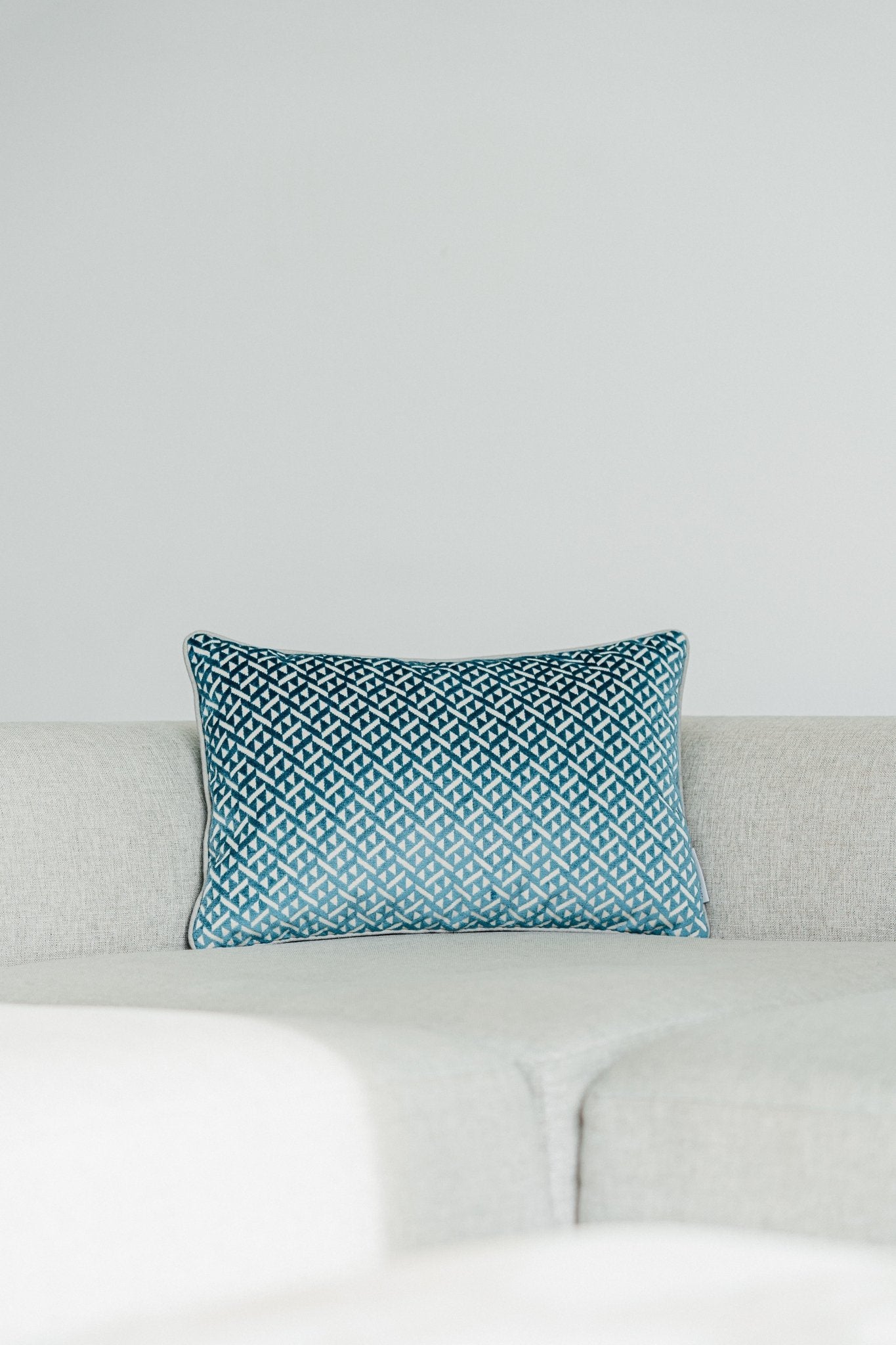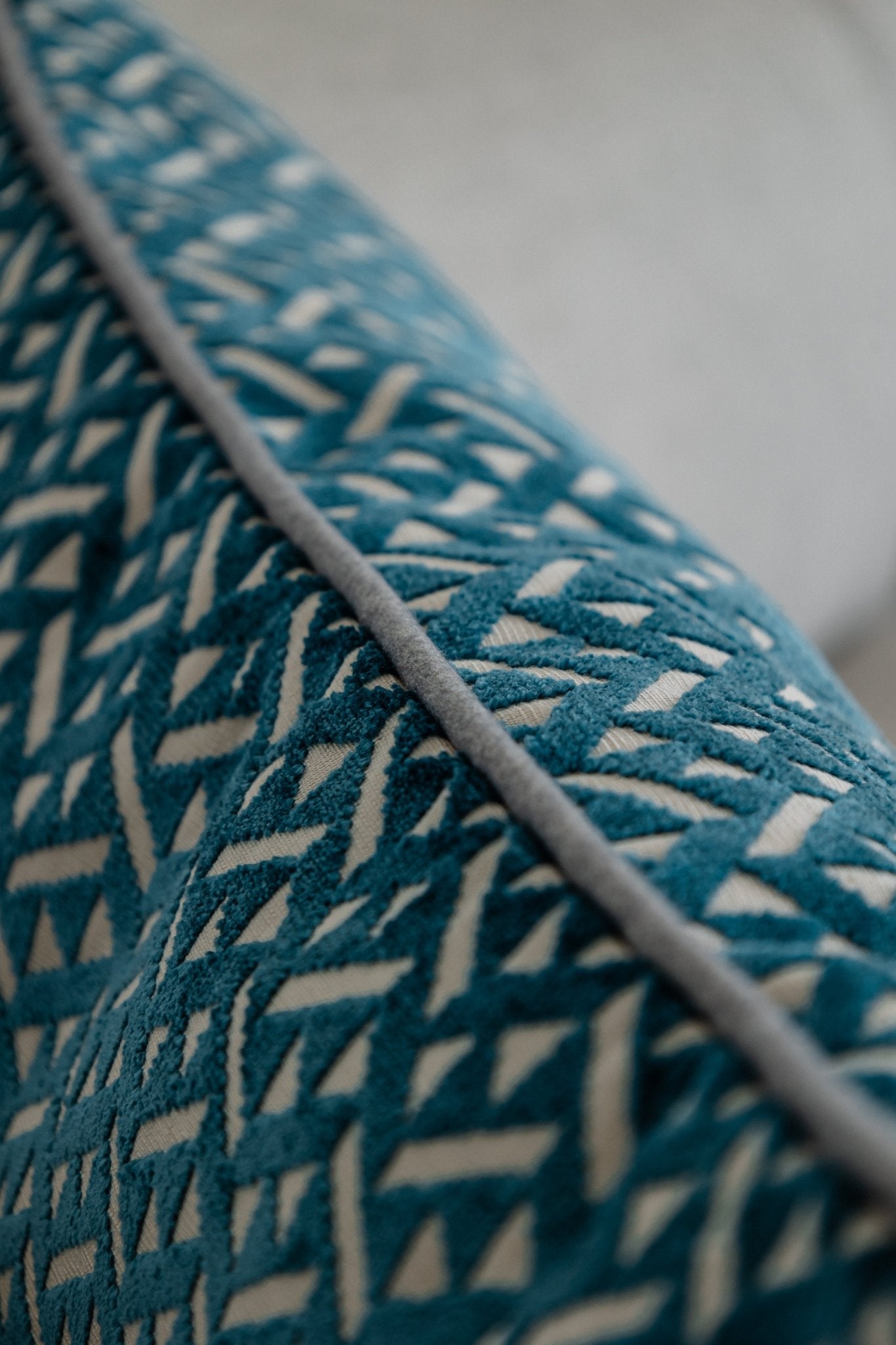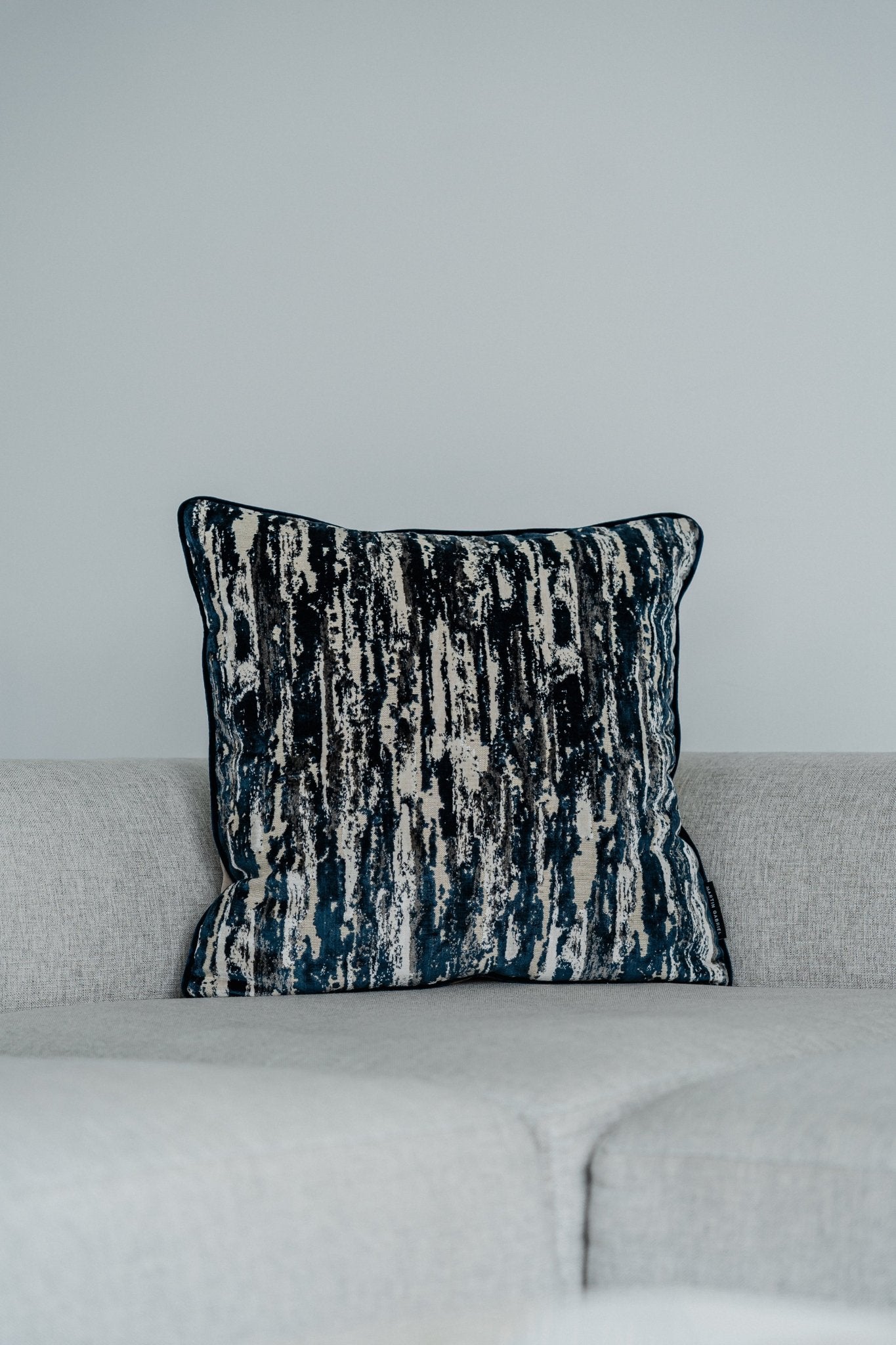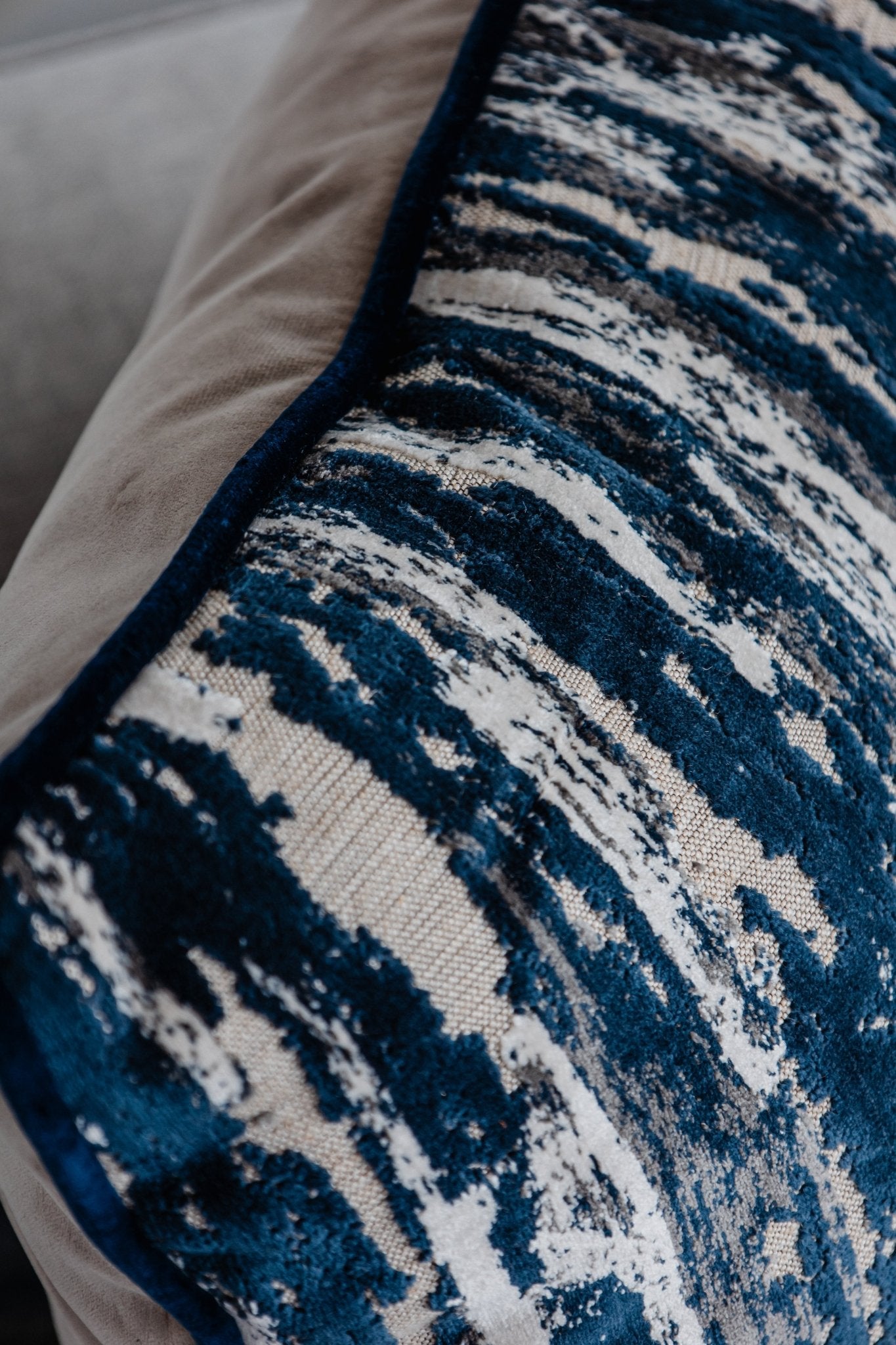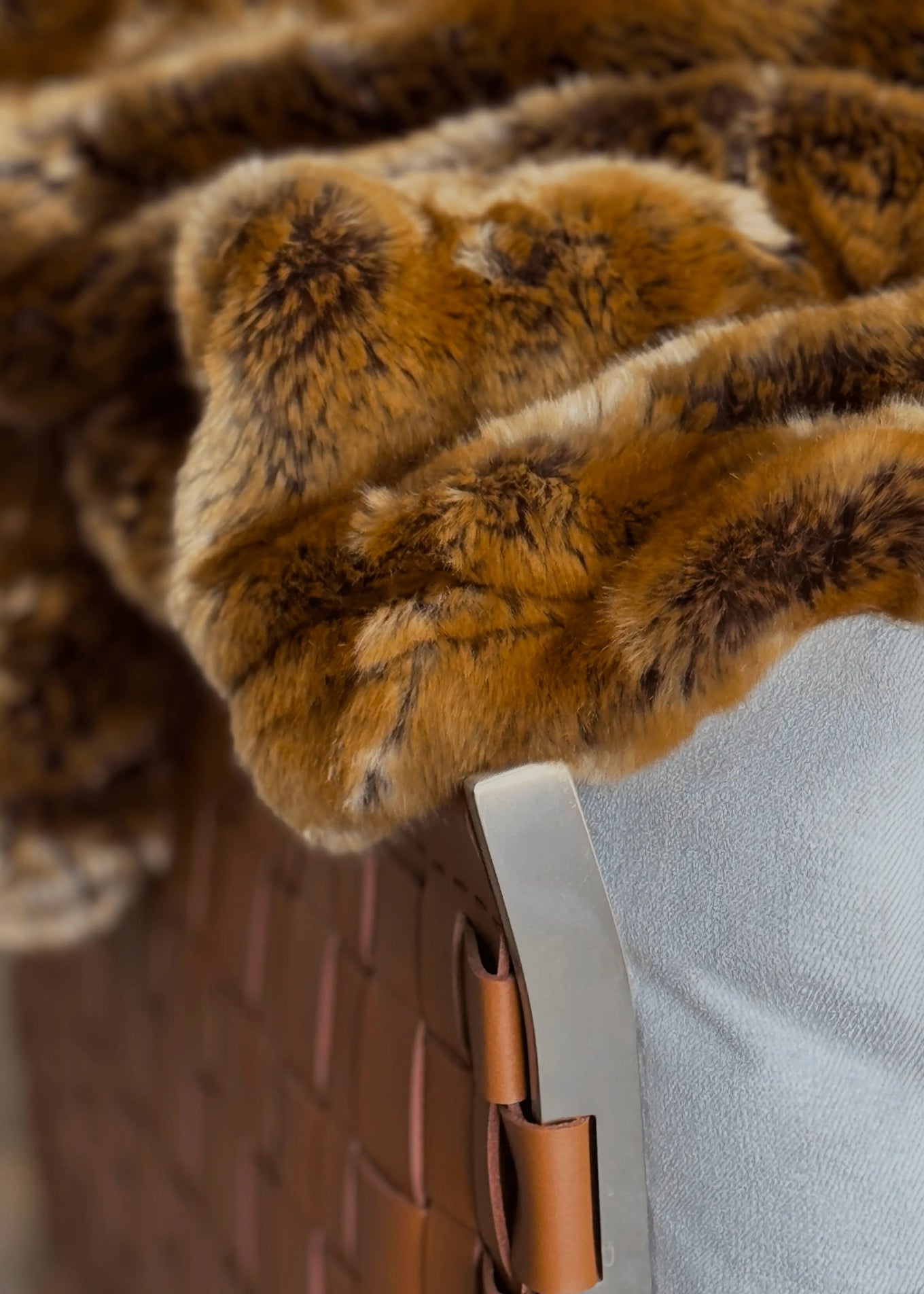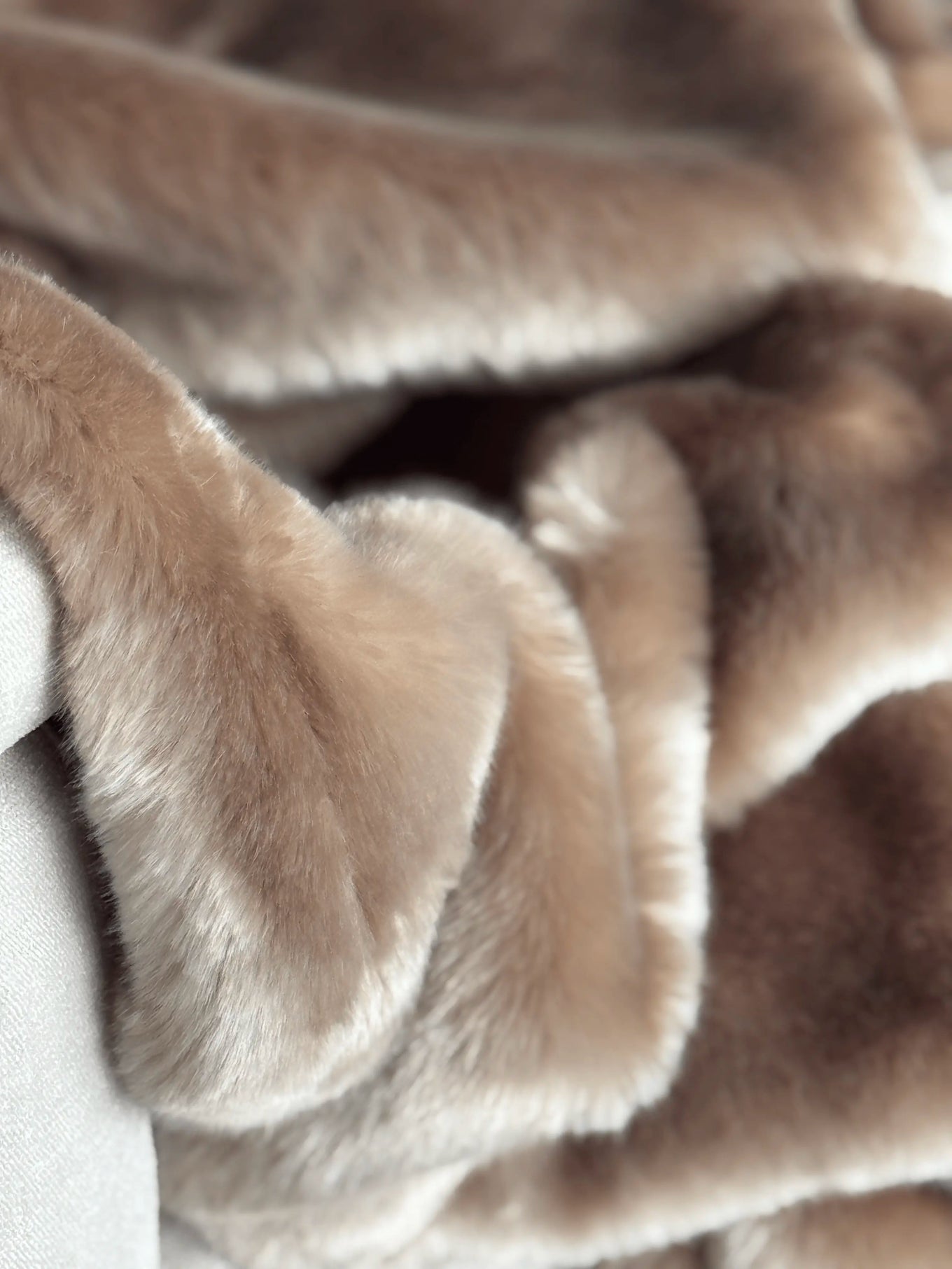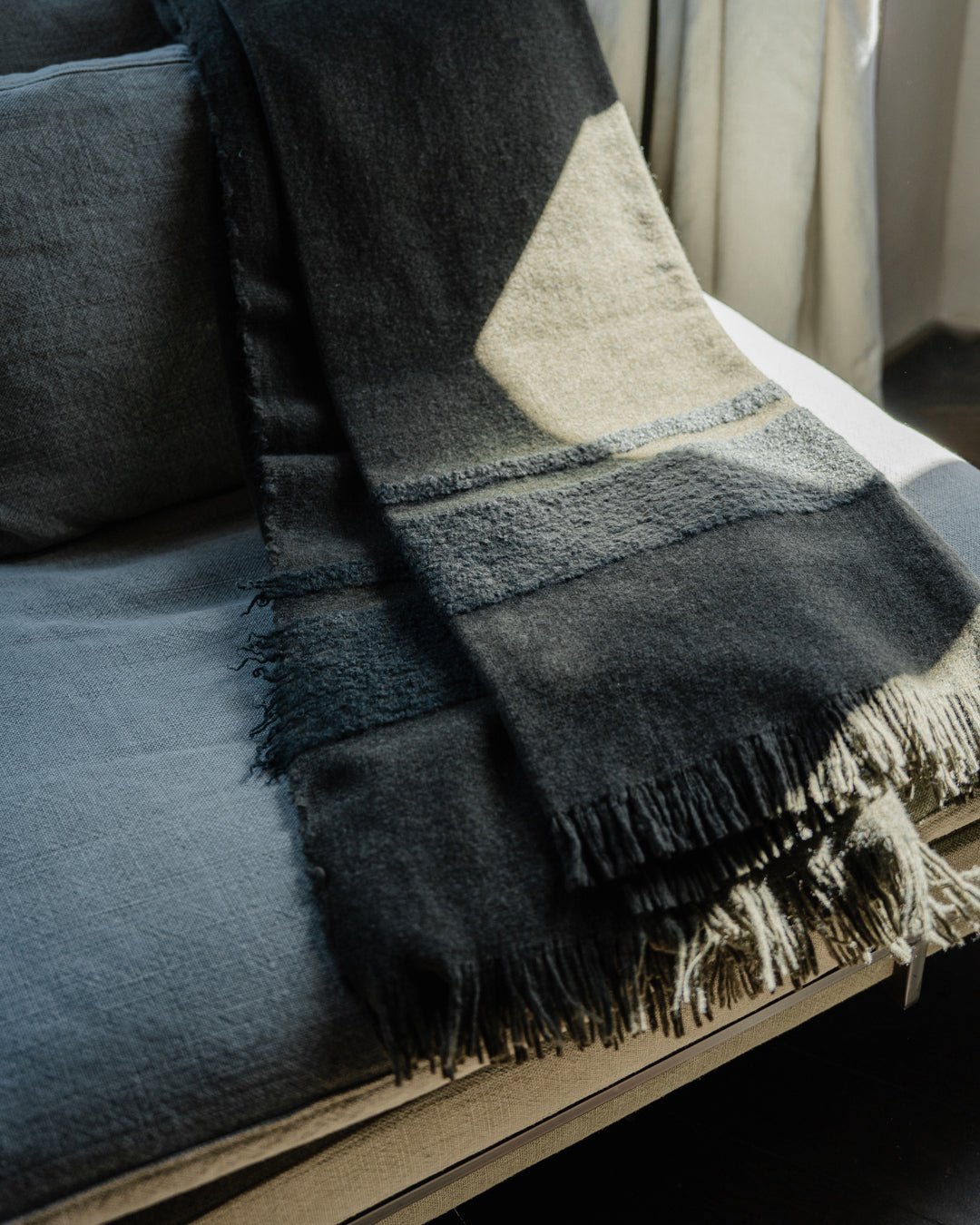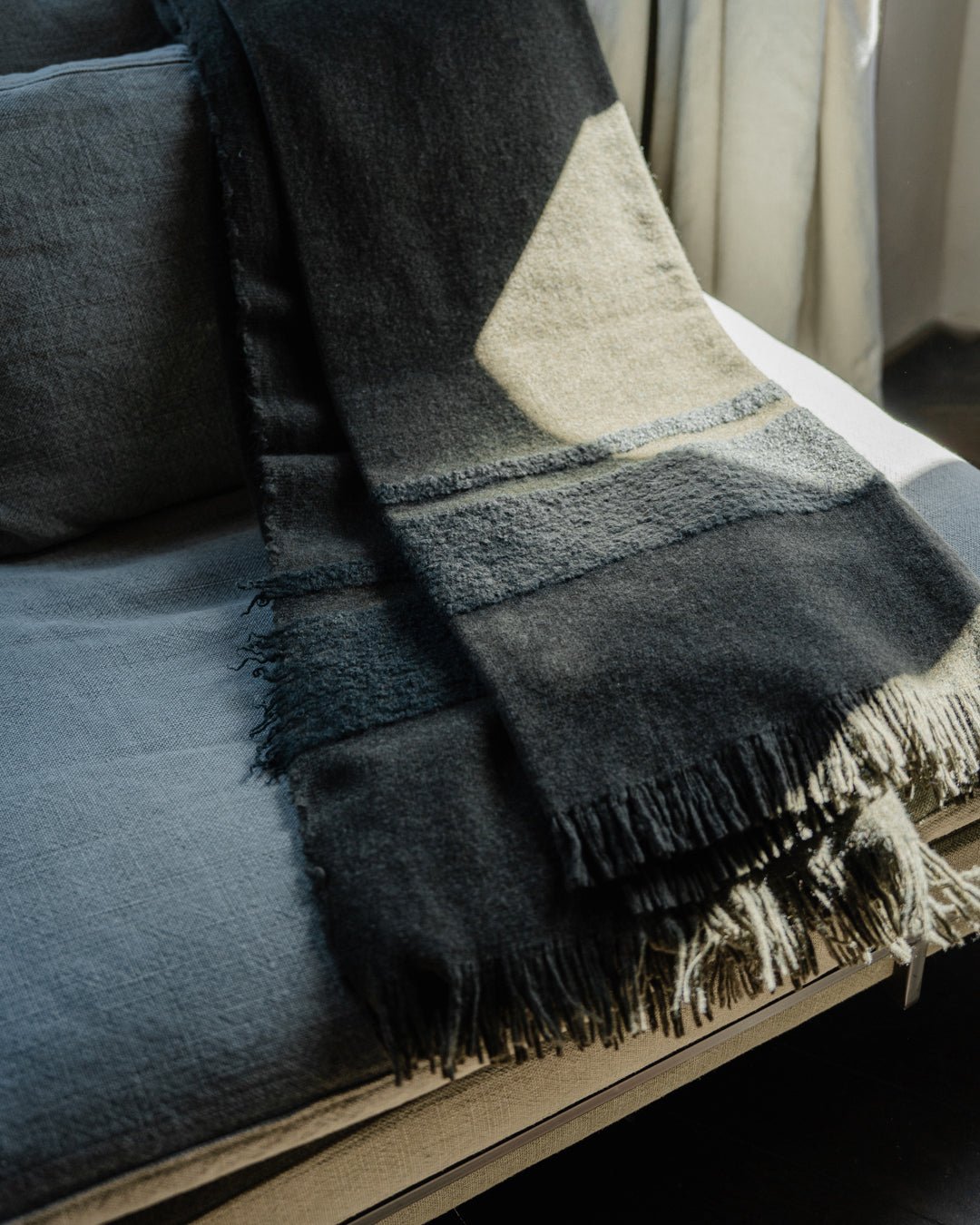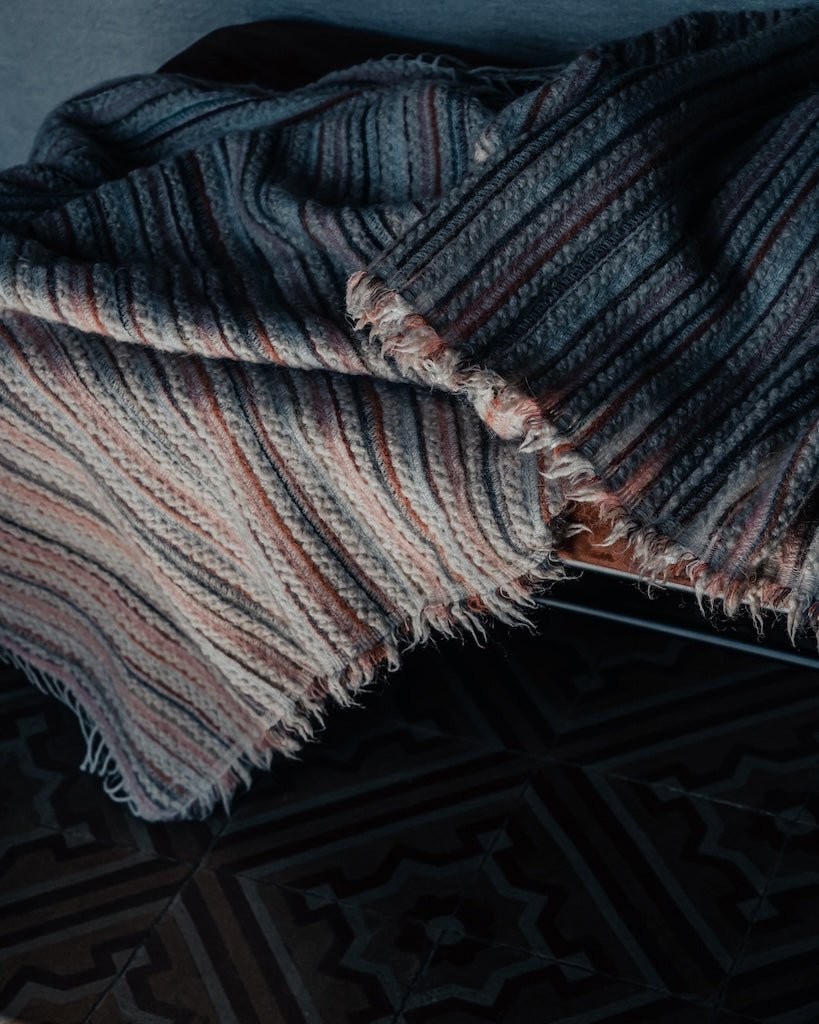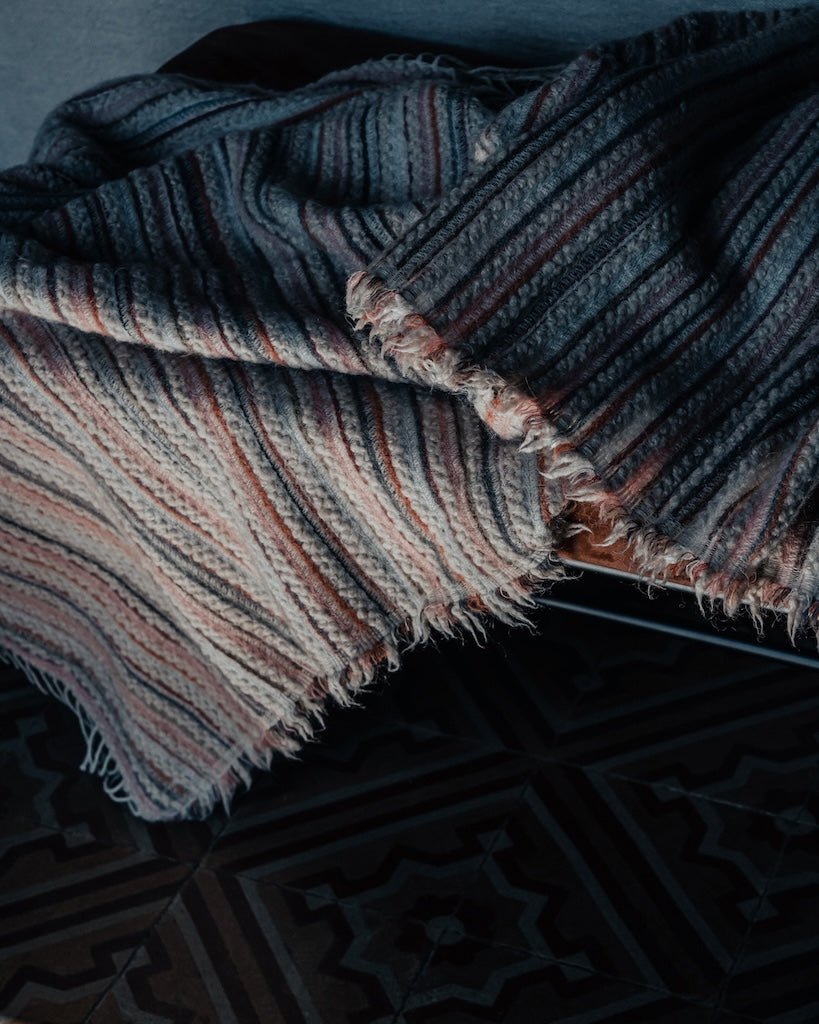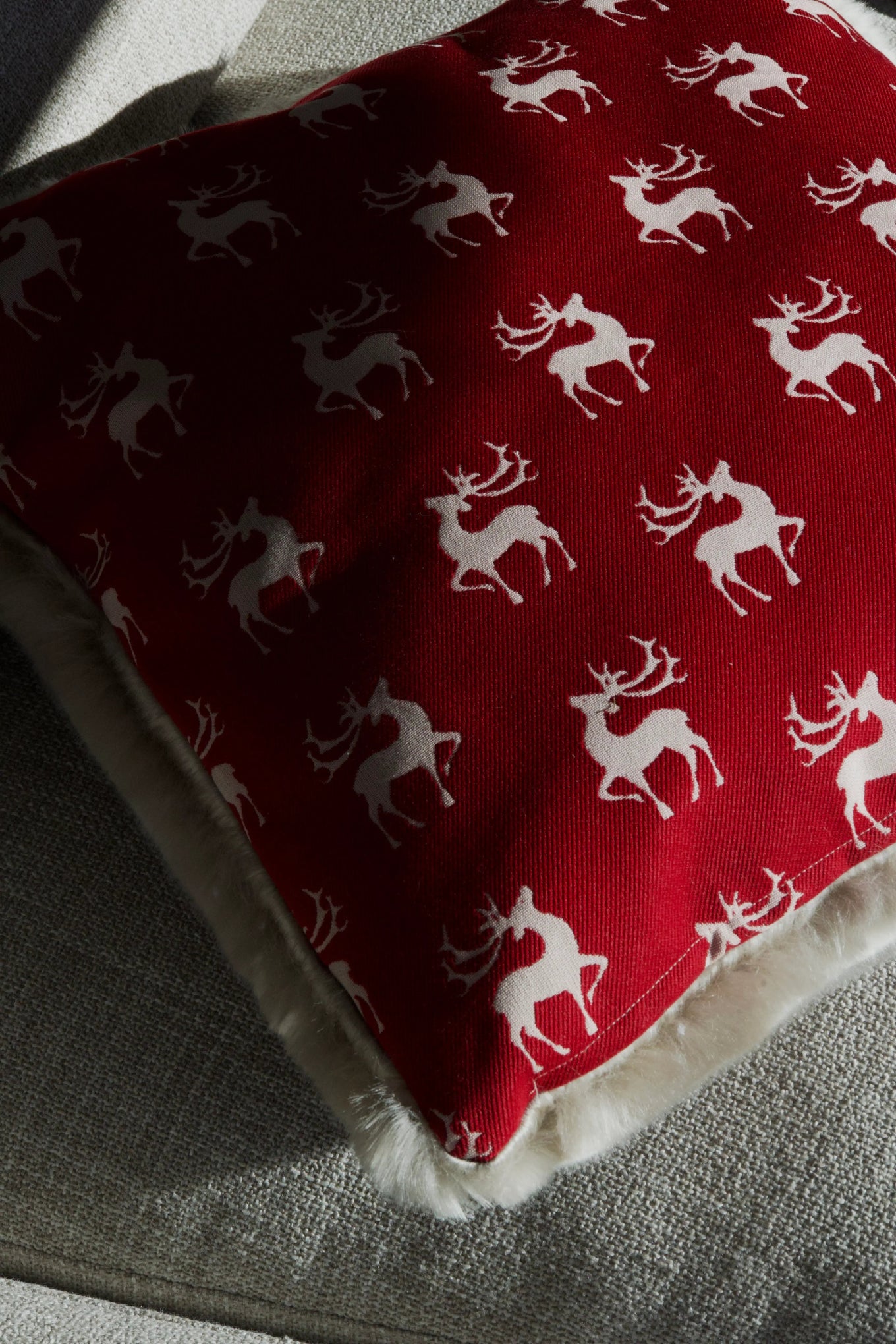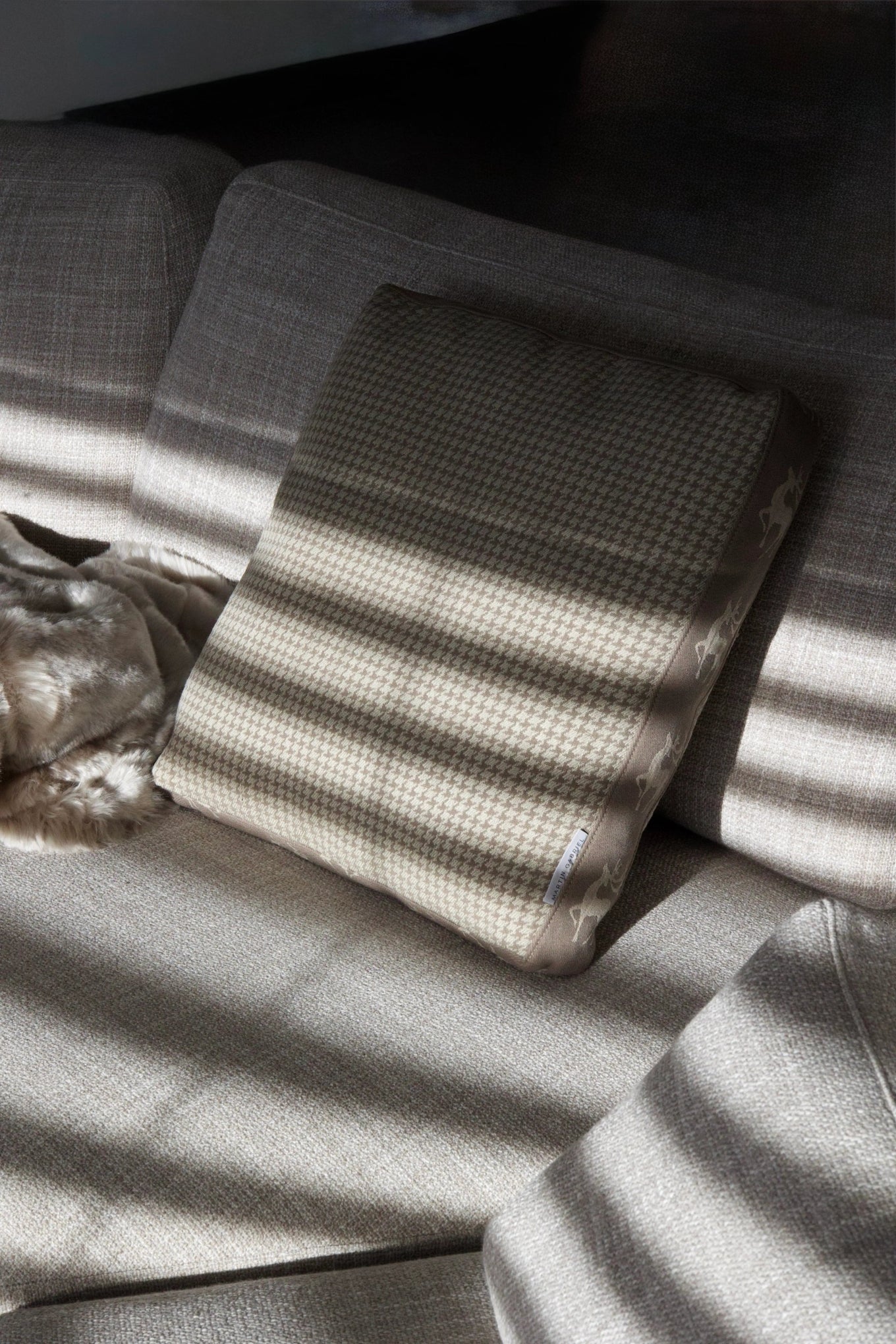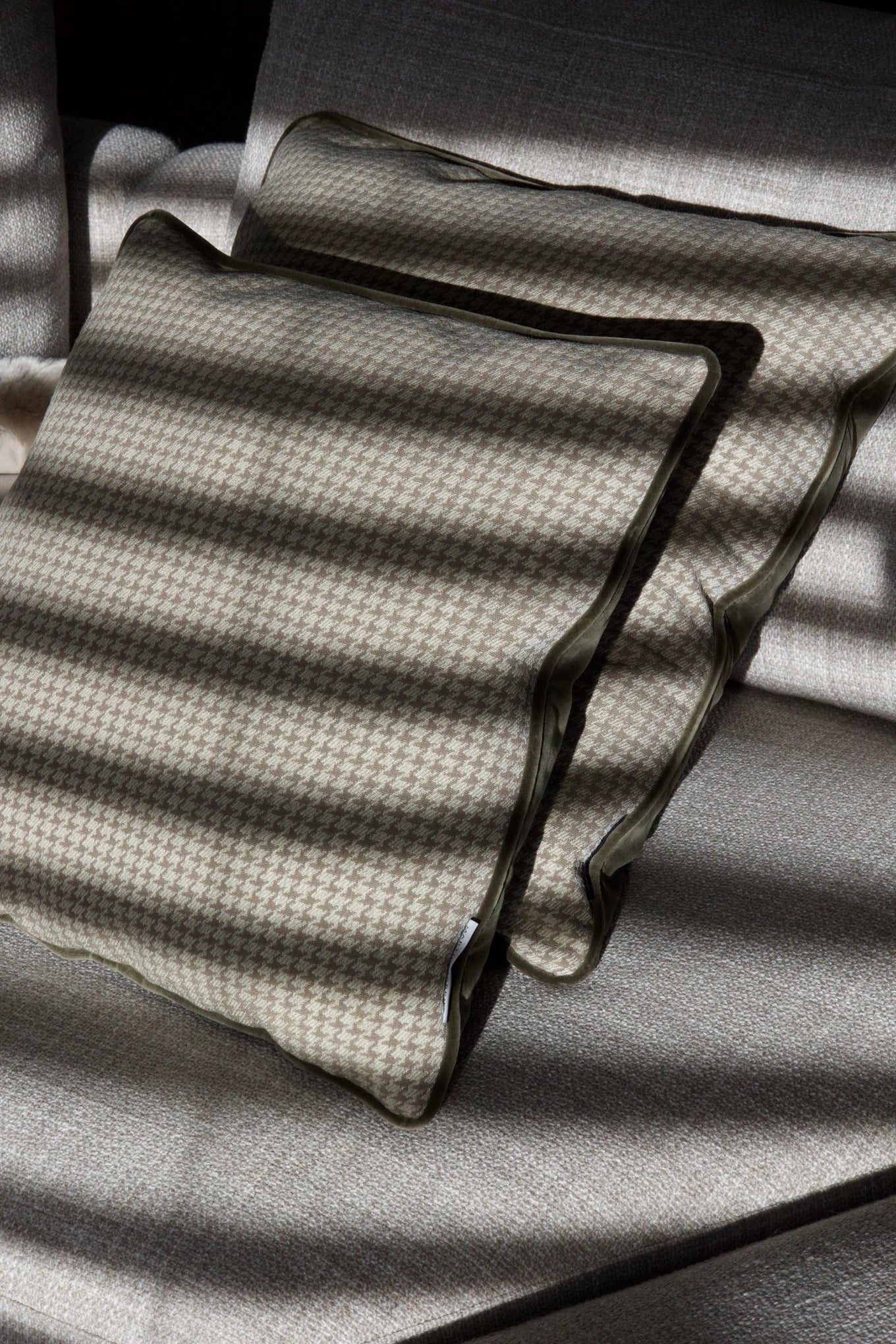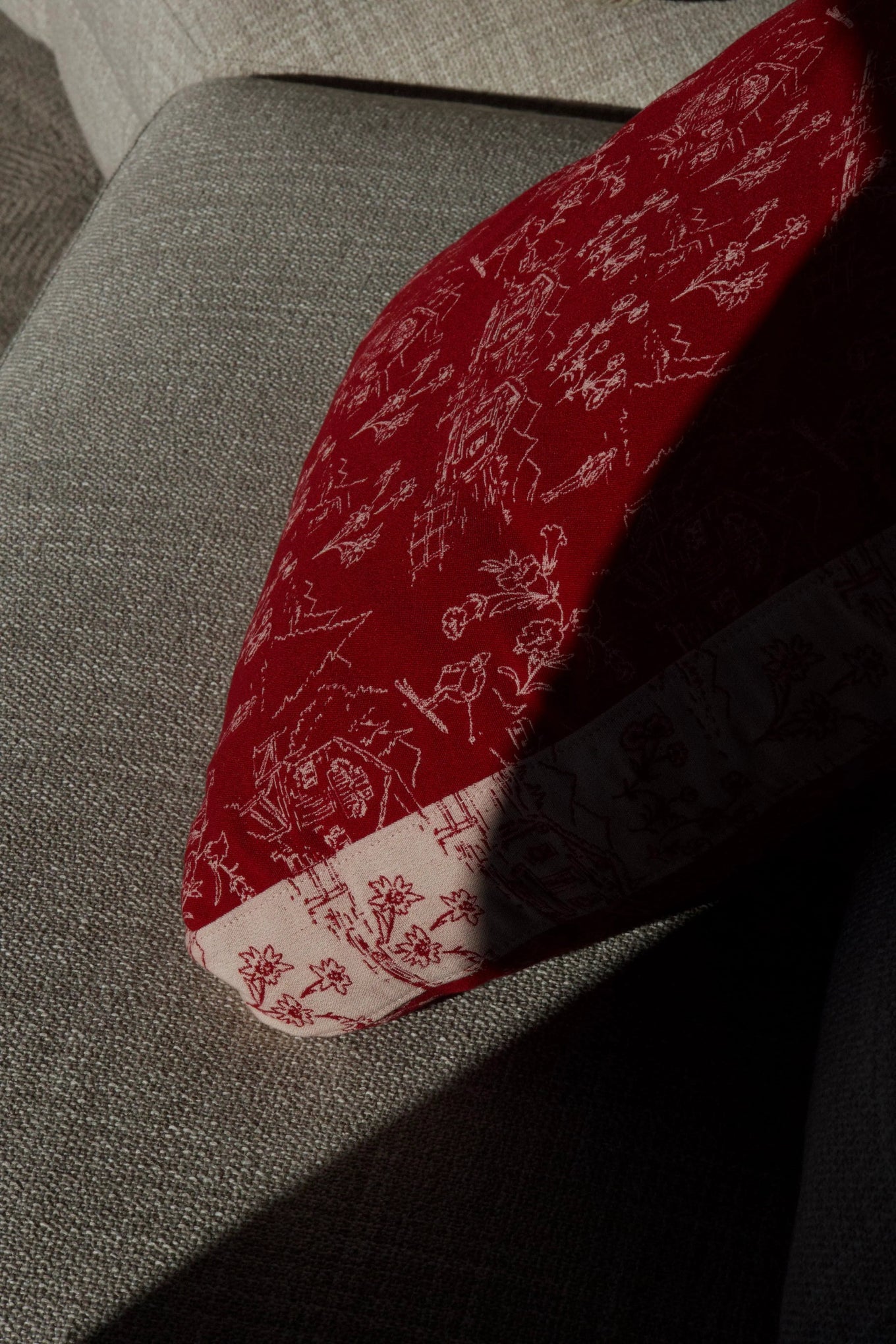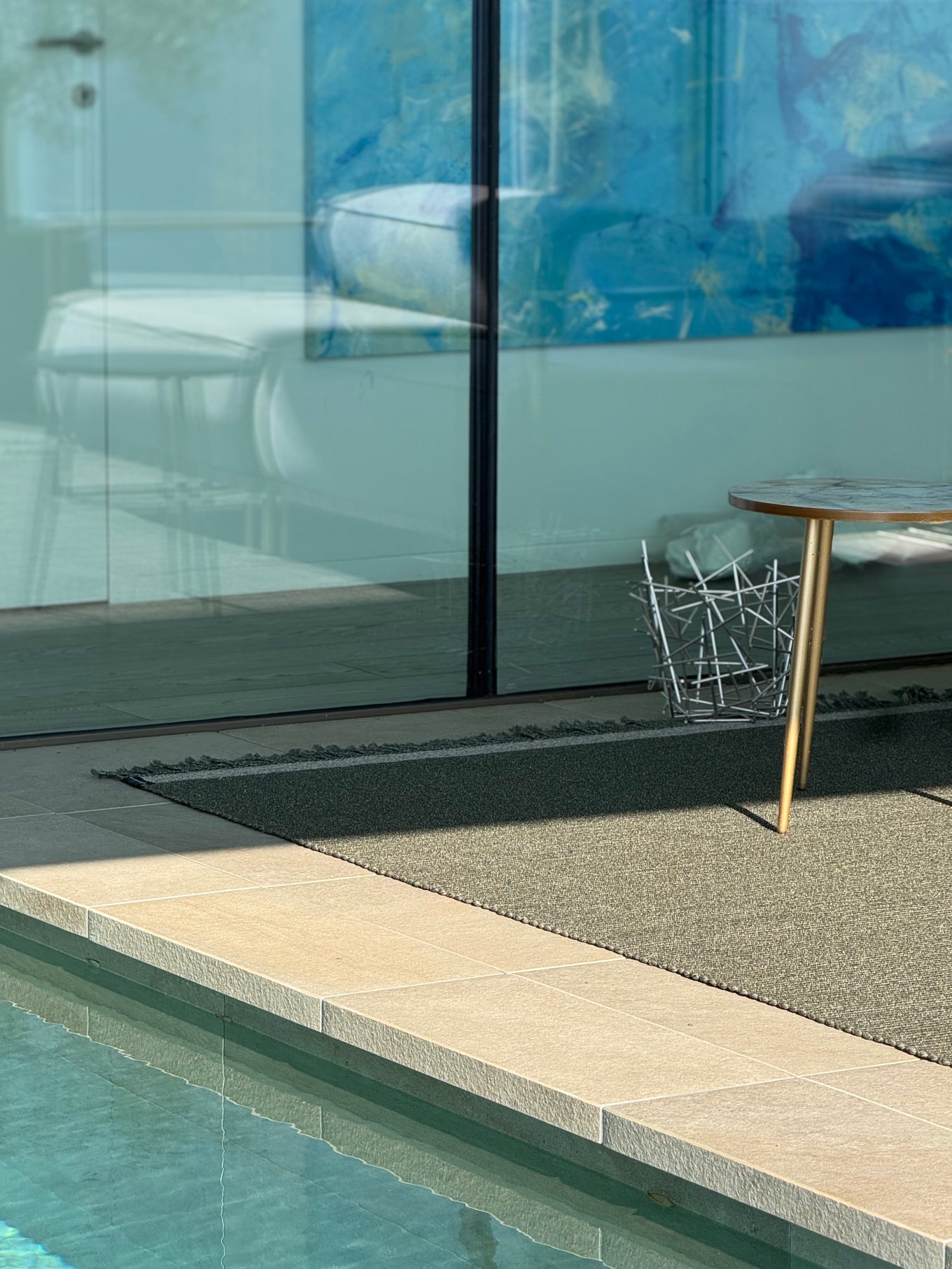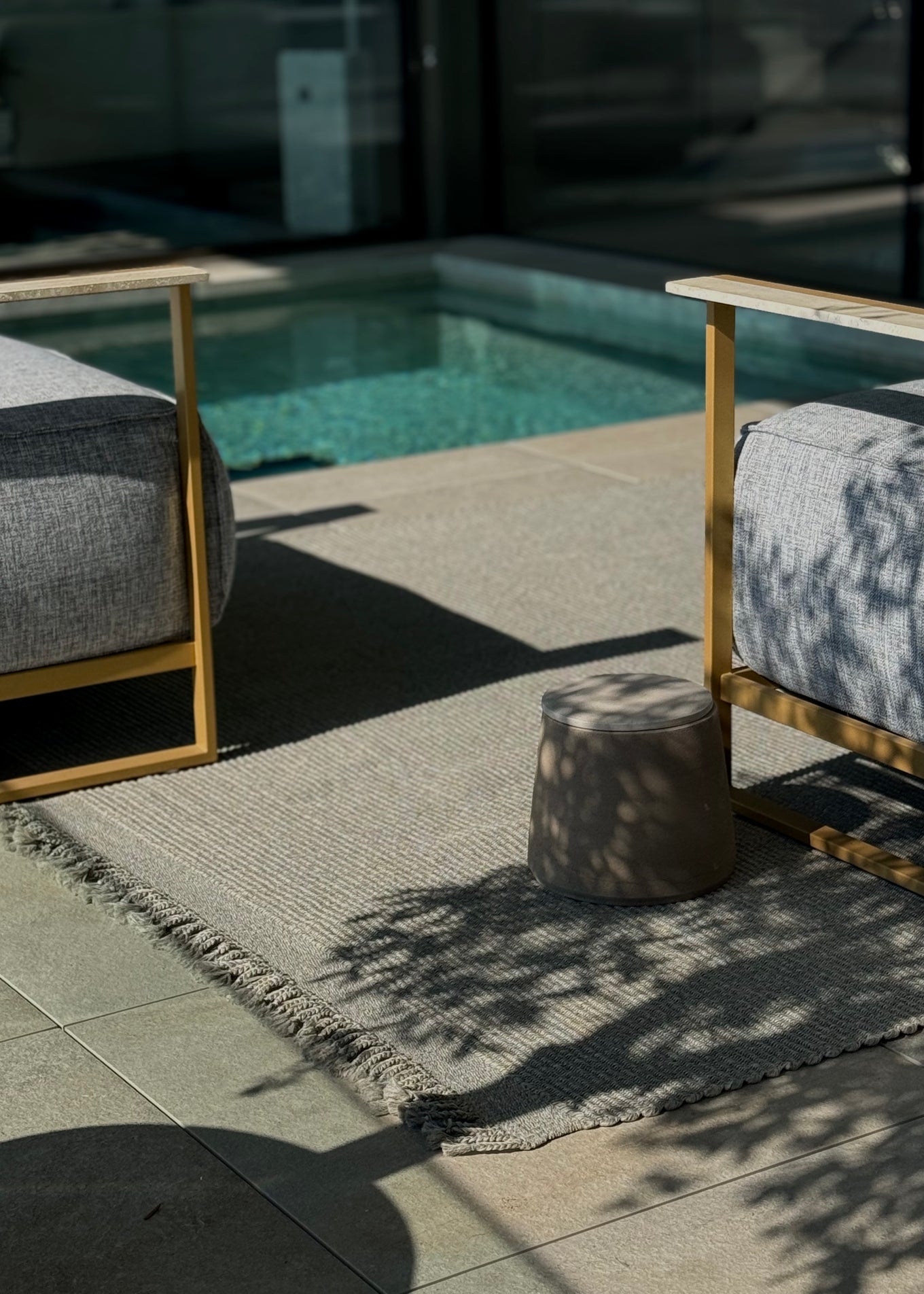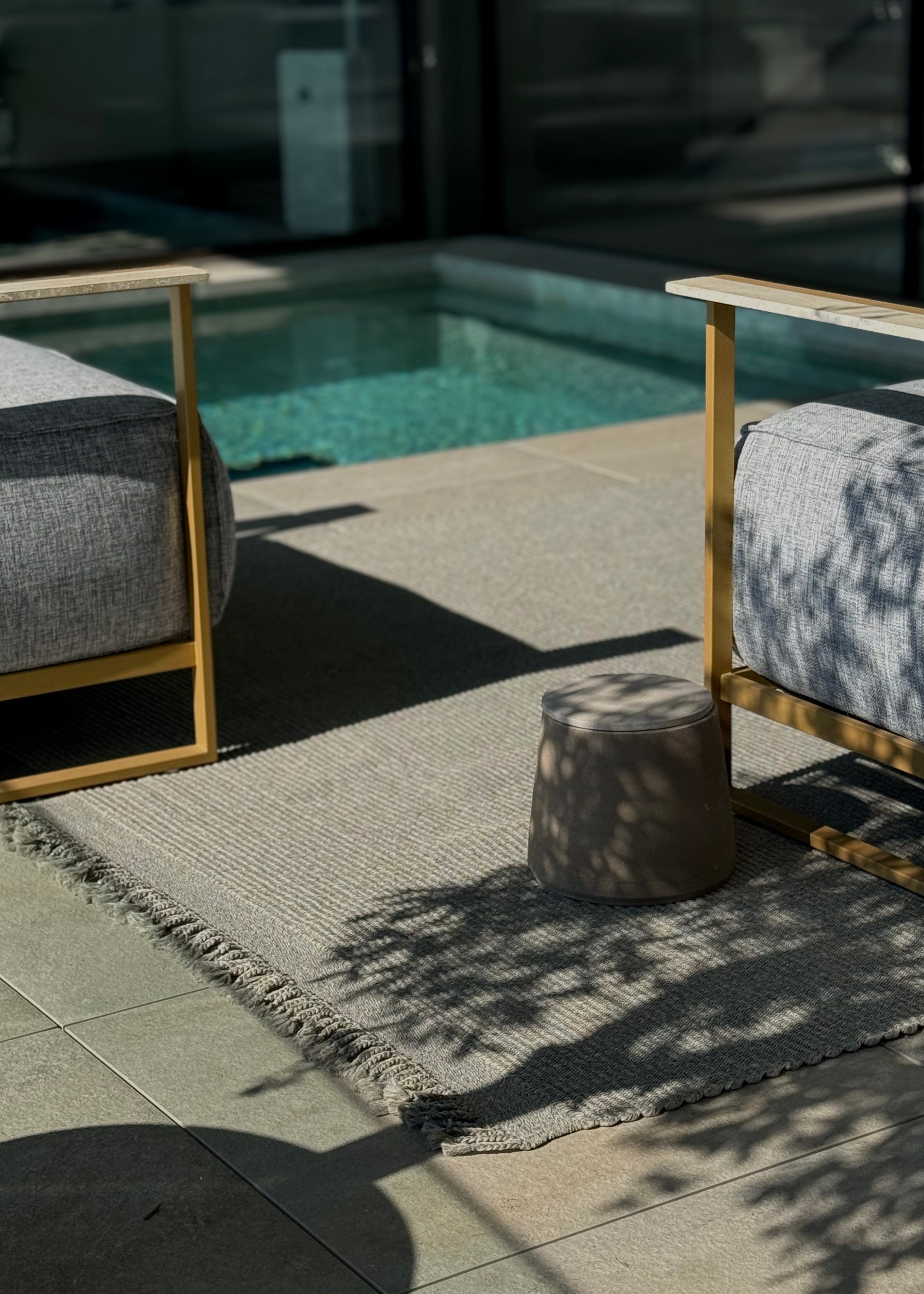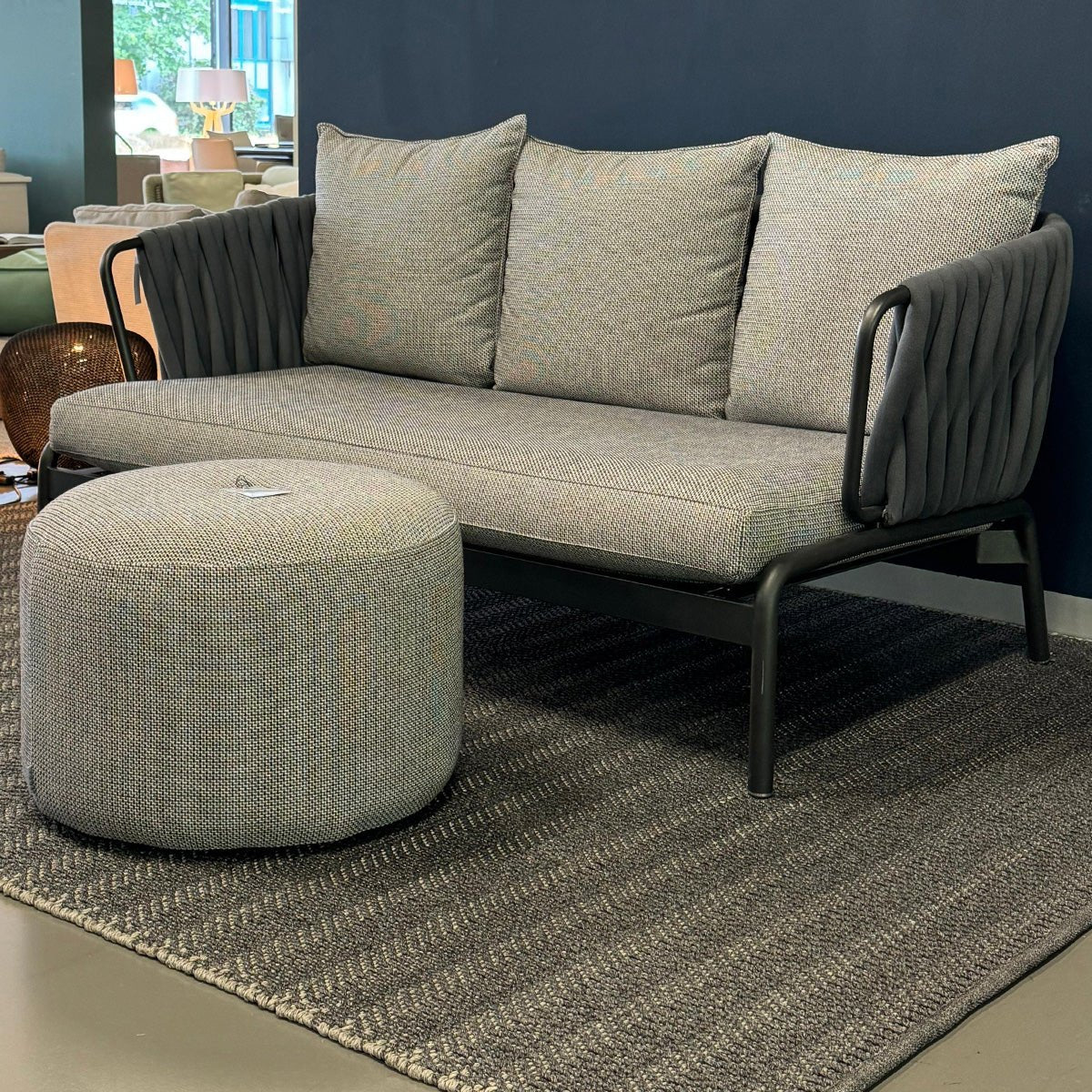Chalet Collection
Chalet Collection
All about this collection
All about this collection
Renowned luxury hotels and restaurants already rely on our pillows and carpets.
Martin Gabriel Home
Collection for style, quality & living comfort
Highlights
Martin Gabriel Blog Home
Discover the lifestyle in the Swiss Alps
The day begins early. The air smells of resin and wet stones, cows wander slowly past your fence, and a thin wisp of smoke rises into the sky from behind the neighboring house's gabled roof. In the Swiss Alps, serenity isn't a trend, but a way of life. Those who live here don't measure the value of the day by completed emails, but by clear light, reliable hands, and the changing seasons. Between summits and serenity: everyday life, culture and enjoyment The Alpine way of life arises from the interplay between altitude and closeness. Closeness to people, animals, and traditions. Altitude as a constant reminder that weather, terrain, and time impose limits. These limits create freedom. Those who cultivate a slope lose track of time. Those who drink an espresso in the village square quickly learn that a brief greeting can spark a long conversation. Lifestyle here means sensitivity: for nature, for one's neighbor, for the materials one works with. Wood, stone, milk, wool. Those who make a living from it combine respect with thoughtful simplicity. Values that sustain everyday life Take time seriously, without letting yourself be rushed. Quality over quantity Honest materials, little frills Care in work, food, and hospitality Enthusiasm for the obvious: water, bread, cheese, sun, shade These values are not a romantic notion, but a decision made anew each day. A house doesn't become pretty because it's old. It becomes beautiful because it's well cared for. Languages as a home Four national languages shape the Alpine regions: German, French, Italian, and Romansh. One valley can sound like a different country. Greetings are small keys. German-speaking valleys: Grüezi, Grüessech, Hoi Western Switzerland: Bonjour, Salut Ticino: Buongiorno, Ciao Graubünden: Allegra, Buna sera Those who greet others open doors. Those who listen hear differences: Walser dialects, Engadine melodies, the soft Italian of the Maggia Valley. Language is both identity and invitation. Architectural culture: Between sgraffito and shingle The houses tell stories. Stables on stilts, Engadine houses with sgraffito ornaments, Vals wooden buildings, darkened by sun and time. Overhanging roofs keep out the rain, thick walls cool in summer and warm in winter. This isn't nostalgia, but function. Principles that are often seen: Building with what's available: larch, Swiss pine, granite, limestone Dense village centers instead of urban sprawl Renovate instead of demolishing, adapt instead of bending. Slim technology, robustly designed In many valleys, workshops are emerging that combine ancient knowledge with new forms. A door that closes tightly in winter, a window that casts a shadow, a floor that creaks and holds. Beauty arises from use. Food as a lived culture When people think of the Alps, they think of cheese. But the culinary offerings are diverse. Dried meat in Valais, capuns in Graubünden, polenta in Ticino, alpine cheese and butter that taste of meadows. The cuisine is down-to-earth, yet refined in its balance. A few basic principles: Season matters: Spring herbs, summer berries, autumn mushrooms, winter dishes from the pantry Short distances: What the alpine pasture provides finds its way onto the plate. Time for eating together, without distractions An evening might look like this: bread from the wood-fired oven, raw milk cheese from the neighboring valley, sun-kissed tomatoes, a glass of Dôle or a Merlot from Ticino. And conversations that don't watch the clock. Working on the alpine pasture The alpine pasture is a workplace, not a backdrop. Those who move up there in the summer live with herds of animals for several months. The daily routine: 04:30 Milk 06:00 Cheesemaking, bread baking, checking the brine bath 10:00 Check fences, repair watercourses 13:00 Midday rest, tool maintenance 15:00 Second milking time 7:00 PM Check round, weather check The production process is strenuous yet fulfilling. A wheel of cheese is a landscape preserved in time. You can taste the altitude, the herbs, the rock. Traditions like the ascent and descent of the alpine pastures are more than just folklore. They mark transitions, foster community, and give animals and people a ceremonial start to new phases. Bells, fir branches, flower wreaths, lots of laughter, sometimes rain. It's all part of it. Exercise that feels good People in the Alps are very active. Not just as a sport, but as part of their everyday lives. Stairs instead of elevators, carrying instead of rolling. This has an effect on both body and mind. Popular activities: Hiking on well-maintained trails Mountain running and trail running for those who want a higher heart rate Climbing and via ferrata Ski touring and snowshoeing Cross-country skiing in wide valleys Bicycle, gravel bike, racing bike or e-bike Those who are out and about follow rules that have become established: Respect paths, close pasture gates Keep dogs on a leash and observe livestock protection regulations. Respect wildlife resting areas Take your rubbish with you Greet politely, even if you're short of breath. Seasons as pacemakers Spring smells of new beginnings. Water rushes in the streams, the first crocuses push through. In summer, the grass stands tall. The heat is different than in the lowlands, drier, clearer. In the evenings, lines of thunderstorms move across the ridges, and the air afterwards is as fresh as new. Autumn is a grand spectacle of gold and copper. Larches don their festive attire, grapes ripen on the southern slopes. Winter brings stillness and precision. Sounds mute, paths become clear, stars draw closer. Each region has its own activities, its own food, its own light. A thought that often comes up is: You work with what time allows. Build in summer, plan in winter. Harvest in autumn, sow in spring. The patience that grows from this makes many things easier. Modern working environments in old valleys Fiber optic internet has reached a surprisingly large number of villages. Co-working spaces are now open in Andermatt, Brig, Davos, and Samedan. Meetings in the morning, a quick climb in the afternoon, and the village choir in the evening. It's possible. And it requires discipline. Questions to ask yourself: How can housing remain affordable when second homes create pressure? How do you protect the character of places without blocking new ones from being created? How can hospitality remain genuine without becoming mere window dressing? Many communities respond with smart land policies, quotas, and a vibrant community life. Newcomers are invited to participate. A festival always needs hands to stack wood, carry tables, and cut cakes. Festivals and rituals throughout the year The list is long and delightful. Here are a few examples that make the feeling tangible: Chalandamarz in the Engadine, at the beginning of March, to drive out winter Désalpe in western Switzerland, when the cows return to the valley Swiss wrestling on green rings, strong, fair, with tradition Hornussen, idiosyncratic and precise Livestock shows where breeding and pride don't boast, but shine brightly. Silvesterchläuse in Appenzell: singing, costumes, rhythm These festivals weren't invented for cameras. They work because they resonate with the people. Anyone who attends as a guest quickly realizes how much attitude matters: not pushing in, not lecturing, pitching in when help is needed. Flavors that linger The Alps taste different depending on altitude, valley, and wind. A few images to savor: Engadine: Nut tart, Bündnerfleisch (air-dried beef), barley soup Valais: Raclette, apricots, Heida wine from old vines Ticino: Risotto with lotus rice, chestnuts, Luganighe Bernese Oberland: Alpine cheese, meringues with double cream Central Switzerland: Alpine macaroni, pear bread, cherry A brief overview will help here. region Language Signature Court Architectural detail Pace in everyday life Graubünden German/Romansh Capuns, Pizzoccheri Sgraffito, Engadine House Uniformity, clear Valais German/French Raclette, dried meat Storage on stilts Slowly, sunny Ticino Italian Polenta, risotto Stone slab roofs Lively, warm Bernese Oberland German Alpine cheese, Rösti Chalets with wide roofs Deliberate, steady Central Switzerland German Alpine macaroni Wooden shingles, sheds down-to-earth, calm The differences are not absolute. However, they show how much diversity is contained within a manageable space. Tenses: slow, deliberate, focused The alpine way of life has three concepts of time that one learns quickly: Seasonal time: Calendar of work, harvest, festivals Time of day: light, shade, temperature, noise level Weather time: When a thunderstorm is forecast, the plan is changed. Those who live by this principle organize themselves differently. Tasks are grouped, routes are planned, and reserves are built in. This creates calm. It reduces pressure because flexibility is factored in. Traveling with purpose Traveling in the Alps has its own unique style. The yellow postal buses wind their way safely through valleys, trains glide by on time, and mountain railways open up to higher altitudes without any rush. Those who respect this pace pack their luggage in two light bags, fill their water bottle with spring water, and leave everything else at home. A few useful tips: Train and postal bus connect almost every village Book hut tours early, bring a sleeping bag liner. Keep still during breaks in wildlife rest areas Clear weather rules: Do not go onto ridges during thunderstorms. Shopping in the village strengthens exactly the kind of shops you want to see there. Small gestures with a big impact Greetings, not shouts Clean shoes at the front door, especially on wooden floors Use water sparingly, but drink it without hesitation if it is labelled as drinking water. Separate waste, return glass and PET Have cash or card ready; small shops appreciate cash. Those who come with this attitude will never just be guests. They will become fellow human beings, at least temporarily. Crafts today The new workshops smell of oil, wood, and curiosity. Knives made of local steel, furniture of Swiss pine, textiles of sheep's wool, natural paints that allow the walls to breathe. Young companies use digital planning without forgetting the materials. A chair must support weight, a tile must lie flat, a roof must hold. Everything else is decoration. The cooperation with agriculture and tourism is noticeable. A guesthouse sources bread from the village, cheese from the alpine pasture, meat from the valley, and beer from the small brewery by the lake. The added value remains and strengthens what we later call quality of life. Nature and protection Alpine regions are fragile. Paths that have lasted for decades are destroyed if water flows incorrectly. Forests protect against avalanches, and pastures stabilize slopes. The conservation strategies are pragmatic: forest management, wildlife sanctuaries, grazing regimes, hydraulic engineering, and avalanche barriers. Behind these measures are people who know their valleys. They work with maps, sensors, and intuition. Both are essential. Two ideas for exciting rounds without stress Northeast variant: Zurich to Sargans, then on to Prättigau Two days in Davos and the Sertig Valley, with a mountain hut as a base Bernina line to Poschiavo, Italian coffee in the square Via the Lukmanier Pass towards Disentis, monastery visit, quiet paths Southwest variant: Lake Geneva shore, Montreux, Lavaux vineyards on foot Martigny, then into the Val de Bagnes Hike to the alpine pasture, cheese tasting directly at the dairy. By train via the Lötschberg axis to the Bernese Oberland, evening at Lake Thun Both routes can be done without a car and with minimal luggage. Those who shop in the village along the way can take a piece of the region home with them. A glimpse into the kitchen of the times Imagine a small dairy. Three copper kettles, a wood-burning stove burning evenly, the smell of freshly cut milk. The dairymaid's hands are steady, her movements precise. The thermometer is important, but her intuition is more crucial. As the curd settles, she talks about the pastures, which are laden with thyme this year. It will be a fragrant summer. Later at the inn, the innkeeper approaches the table. There's no elaborate menu: two appetizers, three main courses, and a cake. You don't choose because there's little, but because every choice is good. Behind the house is the herb garden, and the cook's bicycle leans against the fence. The evening belongs to the voices drifting from the parlor. Places that keep the beat A village square with a fountain. One bench in the sun, another in the shade. The school next door, the town hall opposite, the church whose bell is no louder than the laughter on the steps. A shop that not only sells but also collects news. The post bus arrives on time, a hand is raised in greeting. Nothing spectacular. And that's precisely the point. What remains The Alpine way of life is not a postcard. It is a practiced eye for what is close at hand and a clear decision for quality and moderation. Life is not lived more slowly, it is lived more consciously. It is not about being against new things, but about remaining true to the principles that sustain us when the winds change. Those who experience this carry it into their daily lives. Perhaps in the form of a morning routine that starts a little earlier. Perhaps as a regular walk after meals. As a quiet table without a mobile phone. As a DIY project on the weekend. As a desire for bread that takes time to bake, and conversations that linger in the mind. A morning with Carlo, a mountain guide from Ticino It's 5:15 a.m., the espresso is poured into a small cup that smells strongly of porcelain. Carlo checks the weather forecast, traces a line across the ridge with his finger. The guests are still asleep. He knows the wind will shift around noon. So he's setting off early. Into his backpack go a rope, helmet, some dry sausage, bread, tea, and an apple. No need for long speeches. He speaks softly as he climbs. About the chestnut groves where he played as a child. About his father, who taught him never to rush, even on the path. At the top, he takes off his helmet, looks around, and nods. As the first clouds appear, the descent is brisk. Down in the village, the bar awaits, already full of people at eleven o'clock who aren't in a hurry. It's a perfectly ordinary day. That's precisely where its specialness lies.
Learn moreCulture of the Alpine region: Traditions and customs
In the early morning light, cowbells ring out across the slopes, breath hangs like fine vapor in the cool air, and somewhere a barn door opens. Anyone who has experienced such a moment immediately senses that the Alps are not a mere backdrop, but a living cultural space. The unique characteristics that have developed there bear the marks of stone, weather, altitude, and community. They are not a museum, but rather a concert that has been played for centuries, in which new voices always find their place. Landscape as a cultural stage Steep slopes shape customs. Where fields are terraced and paths wind serpentine to the next farm, a culture of precision and mindfulness towards materials and time develops. Work is conceived in rhythms, in harmony with the seasons, snowmelt, the alpine cattle drive, and the harvest. Everyday knowledge is intricately woven: which meadow is mowed when, how to read clouds, how the slope behaves after heavy rain. The landscape connects. Valleys open to mountain passes, peaks are not boundaries but vantage points. Markets along the ridges and caravans circulating along the roads shaped social and economic networks for centuries, networks in which salt, cheese, fabrics, wine, and stories circulated. Culture flows here in both directions, from village to village, across language barriers. Languages, dialects and identity The Alps speak many languages, and their dialects carry geography in their sound. Bavarian and Tyrolean, Alemannic and Valais German, Ladin in the Dolomites, Romansh in the Engadine, Italian in the Aosta Valley, Slovenian in Carinthia and Friuli, French in Savoy. This diversity is not a mosaic of isolated stones, but rather a texture in which words migrate and idioms leave their mark. Dialects convey lived experience. A word for a specific pitchfork, a layer of snow that holds or breaks treacherously, an expression for the gentle urging of cattle. Those who listen hear about work, the weather, and their neighbors. Modern media level some things, yet at the same time, dialect is experiencing a confident revival on stage, in literature, and in music. Identity is thus revealed not as isolation, but as an open affirmation of origin and tradition. Festivals of the year: From Carnival to the cattle drive down from the mountain pastures The alpine calendar has rhythms that extend far beyond tourism. They mark transitions, give thanks for success, tame dark forces, or invite the community to the village center. Carnival and Perchten runs: masks, bells, clattering costumes that symbolically drive away winter. Hand-carved masks display wild, primal faces. Palm Sunday and Easter customs: Bound palm branches, processions, regional foods after the Lenten season. Mountain bonfires at Midsummer: chains of points of light across the ridges, a sign of unity and an ancient signal. Alpine cattle drive: In early summer, the cattle move to the highlands, accompanied by music and the colors of traditional dress. Cattle drive or cattle descent: The festively decorated cows come down to the valley when the alpine season has been accident-free. A moving expression of gratitude and a folk festival at the same time. Autumn and harvest festivals: wreaths, baskets, markets where cheese, nuts, grapes and chestnuts fill the tables. Advent and St. Nicholas Day, Krampus parades: between blessing and fear, old customs still hold their place. Each valley imbues these festivals with its own unique character. Some places emphasize silence and prayer, others boisterous processions with drums and bells. What they all share is the shared experience that time not only passes but can also be shaped. Music, sound and dance Music in the Alps feels intimately close to the body. Yodeling moves the chest, the alphorn and dulcimer send long notes across the sides, the hammered dulcimer clangs precisely, and violin parts dance on wooden floors. The instruments were created from whatever was readily available: wood, gut, metal. Their sound is adapted to the acoustics of the farmyards and taverns, to the echoes and humidity. Dancing is a social craft. In the Ländler dance, figures aren't recited from memory; they emerge organically through interaction. The Schuhplattler is more than just a show; it's communication, an interplay of rhythm and gestures, often humorous and playful. Modern ensembles build upon this tradition, blending jazz, electronic music, or contemporary poetry with motifs from folk music. In this way, the tradition remains vibrant without seeming like a museum piece. Traditional costume, craftsmanship and materials Traditional dress tells of origin and status, but above all, it speaks of an understanding of materials. Wool, linen, loden, fine embroidery, silver jewelry, and chamois beards are expressions of a region and its resources. The cuts follow function, not mere fashion. A jacket should keep you warm, not replace a waterproof membrane, and it should last for decades. Craftsmanship forms the basis of many everyday things: Wood carvings, from religious figures to masks used in winter Turned wood products and kitchen utensils, bowls, spoons, butter scoops Lichens made with hazel or willow for baskets, fish traps, and trawl nets. Felting, fulling, spinning, weaving, the production of loden fabrics Blacksmith work for fittings, bolts, bells This practice is accompanied by an appreciation for repair. Signs of wear and tear are not considered flaws; they demonstrate the relationship between person and object. Food from steep slopes: kitchen and storage Steep meadows and short summers shape the cuisine. Preservation techniques have become culinary arts: smoking, drying, fermenting, salting, and storing in cool cellars. The result is a cuisine that can be robust yet possesses subtle nuances. Think dumplings, polenta, rösti, barley soup, buckwheat and millet prepared according to traditional recipes, accompanied by mountain cheese, bacon, dried meat, flatbread, nuts, and honey. Alpine cuisine is practical. Breakfast must be nourishing, dinner fortifying. At the same time, there are also lighter celebrations: a Kaiserschmarrn that is caramelized and fluffy, a Marende with cheese, butter, bread, apple and wine. An overview shows the diversity: Region/Valley Specialties Key features Allgäu, Bregenzerwald Mountain cheese, cheese spaetzle, Riebel Dairy-rich landscape, strong hard cheeses, simple pastries Bernese Oberland, Valais Alpine cheese, raclette, dried meat, saffron AOP traditions, Valais saffron, viticulture on steep slopes Graubünden, Engadine Bündnerfleisch, Capuns, Pizokel Drying techniques, buckwheat, Surselva herbs Tyrol, Salzburg Bacon, cheese dumplings, Schlutzkrapfen Pressed cheese in a pan, filled pasta pockets South Tyrol, Dolomites Schüttelbrot, Schlutzer, Tirtlan, Lagrein Ladin influences, baking traditions, indigenous grape varieties Savoy, Aosta Valley Fondue, Tartiflette, Fontina Cheese from high altitudes, potato dishes, hearty cuisine Friuli, Carinthia Frigga, Polenta, Kletzenbrot Corn cultivation, dried fruit, Slovenian influences Cheese is a core element. Sbrinz, Appenzeller, Comté from the Jura near the Pre-Alps, Gruyère, Fontina, Puzzone di Moena, Bitto, Vacherin – each variety with its own microclimate and unique ripening process. A visit to an alpine dairy reveals the interplay of barn hygiene, fire in the kettle, rennet, and time. The taste becomes a slice of the landscape. Architecture and settlement patterns Building on a slope means planning with gravity in mind. Traditional log construction rotates the timbers to face the wind and sets them on a stone foundation that protects against moisture. Walser houses exhibit a refined lightness, while Bregenzerwald houses integrate living and working areas under a single, expansive roof. Engadine houses with sgraffito decoration testify to pride and meticulous craftsmanship. The shingle is more than just cladding; it's a breathable protection for the wood. Stone roofs lie heavy and withstand storms. Living rooms are heated with tiled stoves, their warmth slowly permeating the furniture and walls. Windowsills are deeper to capture light, and arbors become transitional spaces between inside and outside. In many places, dry stone walls shape the hillsides, retaining soil and creating habitats for lizards and herbs. Working in the mountains: Alpine farming and rights Alpine farming shapes the highlands. It encompasses summer grazing, the division of pastureland, the protection of young trees, and the work of the dairymaids and herdsmen. Livestock protection becomes part of daily life when wolves and bears return, and fences, dogs, and knowledge must work together. Haymaking is a choreography where weather windows and physical strength set the pace. Every movement has a purpose; every level of a hayloft tells the story of the winter's stores. Rights on the alpine pastures have developed historically, often organized cooperatively. Common lands regulate water, forests, grazing, and paths. These structures have preserved the use of these resources for generations without depleting them. Conflicts arise and are negotiated in the inn, in community halls, and during site visits. This culture of decision-making is part of the tradition. Myths, religion and rituals The mountains carry stories that seem nameless and ancient. Tatzelwurm, wild women, giants, hidden lakes that do not wish to be disturbed. Such legends explain dangers, teach respect for avalanche slopes and streams. In many places, religion takes a form close to the mountains. Wayside crosses, wayside shrines, chapels on spurs and saddles, processions that mark the paths. Pilgrimages connect valleys and create communities across borders. Mountain rituals are often simple: a blessing before the first hay harvest, a silent sign of the cross when the livestock returns safe and sound, a mountain mass in thanksgiving. At night, mountain fires shine as a symbol and a celebration. The combination of faith, nature, and village community creates a unique and lasting tradition. Border regions and networks: trade, muleteers, passes The Alps are not a wall. Their passes are crossroads where goods, languages, and ideas exchanged. Muleteers carried salt, spices, linen, and cheese. Paths were marked with cairns, and hospices offered shelter. With the construction of major mountain roads and later tunnels, the dynamics changed, but the exchange remained. Market days brought villages together; contracts were sealed with a handshake and bread. Journeymen craftsmen traveled, taking songs with them and leaving behind their techniques. The cuisine reflects these connections, as does the architecture. A window latch in Valais might be related to a piece of craftsmanship in Tyrol, because a blacksmith was on his journeyman's travels. Modern Impulses: Tourism, Protection and Change Tourism brought money, infrastructure, and jobs, but also new tensions. Those growing up experience the opportunities of mountain guide training and the pride of leading people safely to summits. At the same time, questions arise about how many beds a valley can support, when noise becomes harmful, and how to maintain trails without overusing them. The discussions are lively and constructive, and sensitive management is proving effective. Natural hazards are part of the system. Avalanche barriers, early warning systems, torrent control, protective forests, and the management of exclusion zones all contribute to this. The knowledge of older generations meets sensor technology and modeling. Climate change is shifting vegetation zones, glaciers are retreating, and permafrost is thawing. Communities are responding with ingenuity: adapting grazing management, conserving water, stabilizing slopes, and rethinking construction methods. Cultural responses become visible when new festivals preserve ancient meanings while simultaneously demonstrating sustainable practices. The Alpine Convention and regional agreements created a framework in which protection, use, and quality of life are negotiated jointly. This opens doors for projects that understand agriculture, crafts, energy, and mobility as interconnected issues. Small-scale cycles, good trains and buses, conscious construction, regional markets – all of these work together. Knowledge transfer and education in portrait format Alpine clubs, mountain rescue teams, alpine dairy farming courses, nature conservation groups, and village schools are schools without a traditional lecture hall. There, one learns how to tie a knot, when a slope is about to collapse, how a goat gives birth, how to shingle a board, and what a glacier tells us. This learning is practical, yet never anti-academic. Universities collaborate with valleys, develop materials research for wood, strategies for managing slope water, and concepts for sustainable tourism. Digital tools are welcome when they serve a purpose. An app shows the pasture boundary, a sensor reports when the stream is rising, a satellite image helps with forest conversion, and a platform connects small cheese dairies directly with customers. Technology complements, but does not replace, looking at the sky or having a chat over the garden fence. City and mountain: Division of labor with a future Large cities in the Alpine foothills attract skilled workers and send ideas back. Commuting is a reality, and co-working in mountain valleys is no longer unusual. Those who work three days a week in the valley and two days in the city need reliable networks, schedules, childcare, and healthcare. Municipalities are responding with flexible spaces that combine office, workshop, and cultural facilities. At the same time, there is a growing desire to strengthen regional value creation. A village bakery that uses local grain, a sawmill that makes smart use of deadwood and storm-damaged timber, an energy cooperative that combines hydropower with photovoltaics. From small links in the chain, something sustainable is created. Migration brings new languages to the valley, new recipes, new craft ideas. Openness makes the Alps resilient. Protection of tranquility: Sound order and night Silence is a precious commodity. It transforms the sound of cowbells into music and gives space to one's own breath. Communities define quiet hours, hospitality businesses raise awareness, and event organizers plan with consideration for wildlife and residents. Light pollution is becoming a topic of discussion, and starry nights are once again visible when lamps are shielded and motion detectors are intelligently calibrated. The Alps can demonstrate how quality of life and vibrancy can coexist without sacrificing the sky. Practices with a future Many Alpine customs offer answers to questions that extend far beyond the valleys. They are concrete, unspectacular, and precisely because of this, effective. Repairing instead of discarding: shoemaker, tailor, blacksmith, shingle maker. Training and passing on these skills create meaningful professions. Circular economy on a small scale: manure becomes humus, wood chips generate heat, whey becomes animal feed. Every by-product finds a place. Resilient mobility: on-demand buses, shared taxis, cable cars as public transport, promotion of cycling with energy-saving infrastructure. Custom-made timber construction: regional woods, good details against moisture, vapor-permeable walls, long service life, easy deconstruction. Local food: weekly markets with clear origin information, community gardens, seed projects that ensure diversity. Hospitality with substance: Less, but better. Extending the season through cultural events, craft workshops, and nature days instead of mass tourism during peak season. There's an old saying in some valleys: "No alpine pasture, no valley." It encompasses more than just agriculture. It speaks of the mutual support between the highlands and the lowlands, between stagnation and movement, between preservation and innovation. The culture of the Alps demonstrates how rich a region becomes when work, festivals, language, food, and architecture listen to one another. Those who have practiced this listening carry it with them wherever their path leads.
Learn moreFurnishing small rooms: Tips for more style and comfort
Anyone living in a small apartment knows the challenge: Everything has to have its place, be practical, and still look good. It's not about sacrifice, but about clear decisions. With the right measures, even 30 square meters can feel open, light, and homely. It's all about proportions, smart furniture choices, and a calm design that allows the space to breathe. The beauty is that many solutions can be implemented without major renovations. A fresh coat of paint, smartly chosen textiles, the right size rug, and two or three pieces of furniture that serve multiple purposes are often all that's needed. Small area, big impact A small space doesn't have to be cluttered to offer everything. Three basic ideas help with every project: Keep lines of sight clear: Don’t place anything in front of windows, keep passageways open, and place low furniture in the center. Use negative space: Empty areas on walls and floors are design elements, not waste. Uniform lines: Recurring colors, materials and shapes are calming. Even small shifts alter perception. A sofa ten centimeters further from the door can clarify walkways. A tall mirror opposite the window doubles the perceived depth. Color concept: Light tones and targeted contrasts Light colors reflect light and make walls recede. This doesn't have to look clinical. A warm off-white, a soft greige, or a delicate sage green create a sense of calm. Tone-on-tone: Walls, curtains, and large furniture in related shades visually hold the room together. Ceiling lighter than the walls: This creates a visual lift. A slightly brighter white on the ceiling creates a sense of height. Accent in moderation: A rich tone on an end wall can add depth, such as a muted petrol shade behind the sofa. It's important to keep the other surfaces subdued. Mix gloss levels: matte on walls, silky on furniture, slightly glossy on textiles. This refracts light finely without creating a sense of turbulence. If you're unsure, test two or three sample shades on A4 paper on the walls, looking at them in the morning and evening. Small rooms are sensitive to color casts. Plan light in layers Light creates space. Instead of a central ceiling light, a mix of multiple sources makes sense: Basic light: ceiling light or track, dimmable and with warm white 2700 to 3000 Kelvin. Zone lighting: Floor and table lamps for the sofa, bed, and kitchen. This creates islands and structure. Accent lighting: LED strips on the shelf, small spotlights directed at pictures or plants. Translucent lampshades diffuse soft light, while dark shades concentrate it. It's best to hang curtains to the sides, away from the window reveal, to maximize natural light. Multifunctional furniture that can do more Furniture often has to do double duty in small spaces, but comfort shouldn't be neglected. Sofa bed with high-quality mattress or a bed with a bed box Folding table on the wall that serves as a desk and dining table Stool or pouf with storage space Bench at the dining table instead of chairs on one side saves space for movement Coffee table with additional level or extendable top Shelves up to the ceiling, closed at the bottom, open at the top Delicate frames, visible legs, and transparent materials visually take up less space. Sliding doors instead of swing doors prevent collisions in everyday life. Proportions and layouts The smaller the room, the more important the dimensions. A sofa that's too massive will be overwhelming, and a table that's too small will feel lost. Sofa: rather low and compact, 160 to 180 centimeters wide is sufficient for many households. Deep furniture against long walls, low furniture in the center. Rectangular rooms benefit from clear longitudinal axes. Align carpets and lighting. Use wall mounting: bedside tables as small consoles, narrow shelves instead of bulky cabinets. Distance rules: At least 60 centimeters in front of cupboards and 75 centimeters around the dining table so that chairs can be moved comfortably. A simple grid on graph paper or a digital floor plan with actual dimensions prevents mistakes. A life-size paper model of the sofa taped to the floor shows how it feels. Carpets: size, placement and effect Rugs create zones, dampen sound, and provide support. The most common mistake is choosing rugs that are too small. Larger rugs create a more organized look because they connect furniture and prevent small islands. Living area: The carpet should be at least under the front legs of the sofa and armchair. Dining area: Each chair edge needs 60 centimeters of carpet all around to prevent chairs from getting stuck when pushed back. Bedroom: Either a large rug under the bed or two narrow runners on the left and right. Recommendations at a glance: Room type Furniture base Recommended carpet size Placement and effect Living area 12 to 18 m² 2-seater sofa, 1 armchair 160 x 230 cm Front legs on the carpet, connects seating group Living area 18 to 25 m² 3-seater, 2 armchairs 200 x 300 cm All furniture on the carpet, quiet unit Studio Zone Sofa with coffee table 200 x 300 cm Draws a clear zone, room appears larger Bedrooms 10 to 14 m² Bed 140 to 160 cm 160 x 230 cm or 200 x 300 cm At least 50 cm of carpet visible on the left and right small bedroom Bed 120 to 140 cm 70 x 200 cm runner, 2 pieces Warm flanks, flexible care Dining area for 2 to 4 people Table 80 x 120 cm 160 x 230 cm Approximately 60 cm beyond the table edge Dining area for 4 to 6 people Table 90 x 160 cm 200 x 300 cm Quiet seating feeling, chairs remain stable Round rugs are ideal for corners, small dining areas, or in front of an armchair. They soften edges. When choosing patterns, opt for larger repeats, as small patterns can shimmer unsteadily. Textiles and pillows: comfortable without ballast Fabrics add warmth and depth. The trick lies in mixing textures instead of using lots of colors. Cushion in 50 x 50, combined with 40 x 40 and an elongated 30 x 50 Mix materials: linen, cotton, bouclé, some velvet for shine Maximum three main colors, plus natural tones Wool or cotton blankets visibly folded at the sofa or foot end A guideline: three to four cushions are sufficient for a two-seater. Too many accessories make furniture appear smaller. When it comes to patterns, a combination of large, medium, and small works well. For example, wide stripes, small houndstooth, or solid-colored velvet. Curtains are best hung close to the ceiling and floor-length, which creates a sense of stretch. The width is determined by the window width times a factor of 1.5 to 2 for a nice drape. An opaque curtain plus a sheer one creates lightness during the day and privacy at night. Think vertically about storage space Wall height is the most valuable asset in compact rooms. Tall cabinets and shelves up to the ceiling, little-used items above Over-the-door shelves for bedding, cleaning supplies or suitcases Underbed boxes with wheels Narrow consoles instead of deep chests of drawers Mirrors on wardrobe doors to give visual space Coat racks with hooks and baskets instead of deep shoe cabinets Flap doors instead of hinged doors save space. In the kitchen, narrow pull-out shelves or magnetic wall strips help. Order that lasts in everyday life Organization starts with clear filing. A few habits make all the difference: Charger station in a fixed location, cable in the cable duct A mailbox for mail, empty once a week Bowl for keys and wallet next to the door A 10-minute reset in the evening: dishes, blankets, pillows, surfaces free Everything that doesn’t have a fixed place goes into a box for later decision Invisible organization is soothing. Labeled closet baskets, vacuum bags for seasonal clothing, and a laundry basket with a lid make it easy. Material and color palettes that bring calm Less variation, but well chosen. A proven distribution is 60-30-10: 60 percent base tone: walls, large textiles, large furniture 30 percent support: wood tone, metal, second color range 10 percent accent: pillows, art, small objects Metallic details should be repeated. Two or three finishes are sufficient, for example, brushed brass and black metal. When it comes to wood, stick to the same type, such as light oak in various shades, rather than mixing many varieties. A continuous floor without harsh transitions visually enlarges the space. Three practical examples Studio with 20 m² The aim is to structure living, sleeping and working in one space. Sofa bed with slatted frame and bed box, above a floating wall shelf Carpet 200 x 300 cm as living area, coffee table with shelf Folding table on the wall with two stackable chairs, foldable when visitors are present Curtain rail for a floor-to-ceiling curtain that conceals the work area in the evening Light: Track on the ceiling, reading lamp next to the sofa, LED strips on the shelf Colors: warm greige, tone-on-tone curtains, accent pillows in sage and terracotta A large mirror 60 x 160 cm opposite the window The room remains open because there is only a few tall pieces of furniture and the walkways are clear. Bedroom with 12 m² What counts here is peace and quiet, storage space and good lighting. Bed 140 cm with drawers below, upholstered headboard Two narrow wall consoles instead of bedside tables, underneath free Wall lights on the left and right to keep the shelves clear Carpet 160 x 230 cm or two runners 70 x 200 cm Ceiling-level curtains, blackout blinds plus transparent blinds Wardrobe with mirrored doors, inside boxes for small items Colour scheme: soft warm grey, bed linen in natural tones, accents via pillows The ceiling appears higher because the curtains reach the floor and the closet takes advantage of the height of the wall. Home office niche with 6 m² Concentrated work without visual disturbance. Wall-mounted folding table 100 x 50 cm, with two closed wall cabinets above A lightweight swivel chair that fits under the table Acoustic pinboard on the wall instead of paperwork Table lamp with dimmable light intensity, warm in the evening, neutral during the day A small round carpet 120 cm that marks the zone Box for technology accessories, charging station After work, the table disappears into the wall, leaving space for a sports mat or guests. Frequently asked questions about dimensions and distances How high should I hang curtains? As close to the ceiling as possible, or at least 10 to 15 centimeters above the window reveal. Allow 15 to 25 centimeters of overhang at the sides to keep the window clear. Which sofa size is right for you? For small living spaces, a width of 160 to 180 centimeters is often best, with a seat depth of 52 to 58 centimeters for comfortable support. What depth should I use for cabinets? 35 to 45 centimeters is often sufficient for books, dishes, or clothes in the hallway. In the bedroom, 55 to 60 centimeters is sufficient for clothes rails. How many cushions are appropriate? Three to four on a 2-seater, five on a 3-seater. Large and few are better than many small ones. Shopping aids and small rules with big impact It is better to take rugs one size larger, they connect zones. Shelves close at the top, doors or drawers at the bottom, open compartments at the top. Place mirrors so they catch light, not clutter. Floor-length curtains, wider than the window, in the same color as the wall or one shade darker. Light sources per room: at least three, preferably four. Repeat materials: wood tone, metal, fabric. Repetition brings calm. Laying cables, hiding multiple sockets, bundling charging stations. Hang shoes and bags, don't stack them. The floor remains vertically clear. Decoration in groups of three or five pieces, different heights. Plant in larger pots instead of lots of mini ones. One olive tree or one monstera looks neater than ten small ones. A word about budget and priorities Not everything has to happen at once. A clever sequence saves money and stress: Determine colors and curtains Choose the right size rugs Purchase central furniture in appropriate proportions Add light in layers Add coordinated textiles and accessories If you change just one thing, start with the rug. The right size immediately transforms the room. Lighting comes right after that. Mini checklist before buying Tape measure handy: Note width, depth, height, including door widths and stairs Test with painter's tape on the floor Check whether cupboard doors and windows still open freely View color samples on the wall and in daylight and artificial light Check return conditions, especially for large furniture Planning wall mounting: dowels, load-bearing capacity, cables Examples of harmonious palettes Bright and warm: walls in natural white, sofa in sand, wood in light oak, accents in rust and sage Clear and fresh: walls in fog gray, sofa in cool blue-gray, wood in birch, accents in black and chrome Soft and textile: walls in greige, sofa in bouclé ivory, wood in smoked oak, accents in brass and forest green Stay calm with dark accents: a black metal shelf, plus two small repeating elements like a picture frame and a lamp. That's enough. Common mistakes and better alternatives Too many small pieces of furniture: better to have a few, balanced pieces. Mini rug in front of the sofa: Better 160 x 230 cm or larger. Curtains just above the reveal: Better close to the ceiling and wider. Busy patterns everywhere: Better to use calm areas and patterns in a targeted manner. Full-surface open shelves: Better closed at the bottom, open at the top for lightness. Numbers that often fit well Curtain width: window width times 1.5 to 2 Carpet dining area: table size plus 120 cm in width and depth Picture height: center of the picture at 145 to 150 cm Distance between sofa and coffee table: 40 to 45 cm Height of wall shelf above sofa: bottom edge 25 to 35 cm above the backrest Little extras that add atmosphere Dimmer for the main light and the floor lamp Scented candle or diffuser in subtle scents One large work of art instead of many small pictures Beautiful bed linen as a visible design element in one-room apartments A high-quality plaid that brings color and structure The combination of appropriate proportions, a few well-chosen colors, and a clear storage plan makes small spaces feel spacious and inviting. With every step, making decisions becomes easier. And eventually, everything fits together so effortlessly that size no longer matters.
Learn moreCarpet trends 2025: natural materials in focus
In 2025, rugs will be more than just floor coverings. They create sanctuaries, zone open floor plans, add character to rooms, and improve acoustics. Natural materials, soft pastels, clean lines, and nostalgic vintage looks form a repertoire that supports both minimalist and expressive interiors. Rugs play a central role in many German homes, bringing warmth and sensuality to often cool materials like concrete, tiles, or parquet. A closer look reveals how closely material, color, texture, and form interact. Some trends appear subtle and understated, while others set bold accents. Both have their place, often even in the same room. Materials that convince now The desire for natural materials is shaping the selection like never before. Virgin wool leads the way, closely followed by jute, sisal, and hemp. Lyocell/Tencel is also gaining importance when a silky, shimmering surface is required. Recycled PET is also becoming established for indoor-outdoor rugs, which are easy to care for and robust. Wool scores points for its elasticity, natural stain resistance, and a pleasant, temperature-regulating feel. Jute and sisal offer a rustic, sturdy texture that provides a grounding touch in modern homes. Hemp is extremely durable, slightly coarse in appearance, but timeless. Lyocell/Tencel delivers shine and color brilliance, but requires more care. Recycled PET surprises with its soft feel and resistance to moisture, making it ideal for kitchens, balconies, or dining areas. Certifications are important to many shoppers. In Germany, you'll often come across labels like GoodWeave, GOTS, or OEKO-TEX. They're not a panacea, but they do offer guidance when shopping. Short material overview material Haptics Care requirements Suitable rooms Sustainability aspect Virgin wool Warm, elastic, soft Medium Living room, bedroom, home office Renewable, long-lasting jute Dry, grippy Low to medium Hallway, living room, dining area Plant-based, often untreated sisal Firm, structured Medium Hallway, study Plant-based, very robust hemp Very robust, striking Low to medium Hallway, living room Plant-based, long-lasting Lyocell/Tencel Silky, cool Higher effort bedroom, living room Cellulose-based, solvent-saving Recycled PET Soft, dimensionally stable Low Dining area, kitchen, outdoor Made of R-PET, water-resistant It's always worth looking at the backing. High-quality rugs have a clean finish, no excessive fraying, and the edges appear sturdy. For hand-tufted rugs, the quality of the latex backing plays a role, while for woven rugs, the evenness of the weave is important. Pastel tones with depth The pastel wave continues, but is gaining traction. Instead of sugary candy colors, smoky, mineral tones dominate: sage, misty blue, powder green, greige, sand, rose with a hint of gray, and muted lilac. These colors have a restrained effect, make small rooms appear larger, and harmonize with oak parquet, concrete, and shades of white found in many German homes. Things get exciting when pastels are combined with texture. A high-low cut in wool, bouclé structures, or hand-woven ribs add shadows and depth to the picture. In daylight, the impression changes subtly, giving the rug a lively feel. Combination ideas: Sage green with oak, white linen and black metal Mist blue with concrete, chrome details and a grey sofa Warm greige with walnut, cream and terracotta accessories Rosé with a broken nuance to brass and natural stone Tone-on-tone rugs with a slight mottled pattern are particularly popular in rooms with bold wall colors. They have a calming effect and create a smooth transition between furniture and floor. Graphic patterns with clarity Diamonds, checkerboards, block stripes, waves, and grid structures make bold statements. In contrast to previous years, the color scheme in 2025 is softer, while the contours are more precise. Beige and ivory meet ink blue or black, often with broken lines that suggest handcrafting. This look is perfectly suited to urban interiors in Berlin, Hamburg, or Cologne, where high ceilings and large windows can support bold patterns. Tips for selection: Consider the scale: Large patterns appear spacious, but they take up space. For smaller rooms, finer diamonds or a subtle grid are ideal. Control contrast: Black on natural white looks strong. For a more subdued look, choose dark brown on sand or ink on misty blue. Consider the furnishings: A graphic rug goes well with simple sofas, clear coffee tables, and few small items. Organic-looking lines reminiscent of hand drawings are also popular. They play with imperfection and bring warmth to minimalist settings. Vintage looks with history Worn, overdyed, and aged patterns retain their appeal. In 2025, vintage refers to two trends: authentic older carpets, such as those from Persia, Anatolia, or the Caucasus, and new carpets with a deliberately aged look. The latter feature washed-out contours, muted colors, and a sunken pile that simulates patina. True vintage pieces: unique, durable, and full of character. They require some care and prefer underlays that prevent slipping and wrinkles. Reinterpreted vintage rugs: more readily available, color-coordinated, often easier to care for. Berber-inspired designs featuring diamonds, a natural white base color, and dark lines are very popular in German households. They combine boho lightness with modern clarity. Those who like to mix and match can layer a small vintage kilim on top of a larger, more subdued wool rug. This creates depth and zones without being overly cluttered. Forms and structures that change spaces Alongside rectangular and round shapes, soft, organic forms take center stage. Freeform rugs follow the curves of sofas or dining sets, adding dynamic flair to floor plans. Oval rugs look elegant beneath round tables, while curved edges soften the harshness of rooms. The surface features a play of loops and cut pile, hand-carved reliefs, and deep-pile islands that make walking barefoot a pleasure. Bouclé and grain patterns are reminiscent of textile art and fit in with the growing appreciation for tangible handcraft. Layering remains a popular theme: a sturdy jute rug as a base, topped with a small, deep-pile pastel rug for a cozy spot. Or two rugs in different shapes that overlap slightly. Experience shows that this works well in German living rooms, especially with open floor plans. Sizes and placement made easy A matching rug ties furniture together and calms the overall look. Too small can make the room appear cluttered. Too large can be overwhelming. A few rules of thumb can help: Living room Under the sofa, the front feet should be on the carpet. In spacious rooms, the entire sofa can be placed on the carpet. Common sizes: 160 x 230 cm, 200 x 300 cm, 250 x 350 cm. Dining area The table and chairs should fit completely on the carpet. Allow at least 60 to 70 cm of extra space beyond the edge of the table. bedroom Large format, which protrudes 60 to 80 cm on both sides, has a calm effect. Alternatively, two runners on the left and right. Hallway Runners with anti-slip underlay, edge distance from the walls 5 to 10 cm. Underlays are a small effort with a big impact. They prevent slipping, protect your back, and make the carpet look more solid. What is particularly popular in German households Scandinavian and Japanese: light wool rugs, soft pastels, and calm textures. Work just as well in older apartments as in new buildings. Urban modern: graphic black and cream patterns on oak or concrete, clear contours, robust for plenty of movement. Boho-natural: jute, sisal, hemp, combined with Berber patterns and warm earth tones. Classic with a twist: vintage looks in muted blue and rust tones, ideal for a modern sofa. Family-friendly: washable cotton blends, recycled PET in the dining area, low pile in the children's room. Many opt for neutral main rugs and add color through throw pillows, art, and smaller rugs. Colors remain muted, patterns graphic, and materials close to nature. Care that makes a difference A good carpet will last for years if properly cared for. Vacuum regularly, ideally using medium suction power and a smooth nozzle. Turn off the brush rollers for deep pile. Rotate: 180 degrees every few months to make light and walkways appear more even. Treat stains immediately: dab with a paper towel, do not rub. Use lukewarm water, and for wool, a mild wool detergent. Test on an inconspicuous area first. Jute and sisal don't like waterlogging. Use moisture sparingly. Sunlight diminishes colors. Curtains or occasionally rotating the screen can help. Underfloor heating: ensure breathable underlays. Choose rubberized backings carefully to allow heat to escape. Moth prevention for wool: regular movement, airing, and placing lavender sachets in closets. If infestation occurs, contact a specialist. Washable rugs are practical in kitchens and children's rooms, but they tend to lose some of their texture with each wash. It's worth taking a close look at the material and care label. Recognizing quality when shopping The quality is reflected in details that you can see and feel: Density and weight: dense pile springs back slowly and appears compact. Edges and finish: neatly sewn, no loose threads. Backing: On woven rugs, the pattern should be clearly visible. On tufted models, the backing should be even, with no sticky spots. Craftsmanship notes: slight irregularities often indicate craftsmanship and charm, not defects. Odor: natural materials smell slightly woolly or herbal, not chemically pungent. Certificates: GoodWeave, OEKO-TEX, GOTS and information on fair production. Information: Manufacturer, material composition, origin and care instructions are transparent. Those who buy online benefit from AR views and return policies. A sample or color chart can reduce uncertainty, especially with pastel shades with subtle nuances. Price range and expectations The range extends from affordable rugs to hand-knotted unique pieces. As a rough guide: Jute, sisal, hemp: often affordable, solid for hallways and living areas. Hand-tufted wool carpets: mid-range, good feel, many shapes and colors. Flat-woven kilims: variable, depending on origin and wool quality. Hand-knotted carpets: higher budget, but exceptional durability and fineness. Recycled PET: often attractively priced, highly suitable for everyday use in dining areas and balconies. Price alone isn't enough. Material quality, manufacturing process, and care are crucial. A well-chosen rug will complement the interior for years, putting the purchase price into perspective. Stage rooms specifically Living room: a large, tranquil greige wool rug, topped with a small graphic accent in front of the armchair. Plants and bookshelves complete the picture. Dining area: Recycled PET in sand with a fine texture, color-coordinated with the chairs. Robust and uncomplicated. Bedroom: pastel-colored deep pile in mist blue, which provides warmth in the morning and visually grounds the room. Home office: flat-woven grid rug that marks the desk area and allows the chair to roll easily. Hallway: Sisal runner with colored edging. Practical and inviting. A good rule of thumb is: A single, clear accent per room is enough. If you mix patterns and colors, keep the palettes related and repeat tones in accessories. Common mistakes and how to avoid them Too small formats: it is better to take a size larger so that furniture can stand on the carpet. Incorrect pile in the dining area: Crumbs get tangled in the deep pile. Better short and dense. Without an underlay: the carpet slips, bulges or appears uneven. Patterns without a calming effect: bold patterns need restrained neighbors. Solid-colored sofas help. Ignoring light: Pastels can vary greatly depending on the daylight. Check the room before purchasing. Why natural materials work so well Wool, jute, sisal, and hemp bring something you immediately feel: balance. They feel warm without being heavy, and their texture tells a story of craftsmanship and authenticity. In everyday life, they demonstrate patience, as small marks, dents, or subtle color variations are part of their charm and are forgiving of wear and tear. Natural fibers also offer advantages when it comes to indoor climate. Wool can absorb moisture, while jute and sisal provide structural stability, prevent furniture from slipping through their friction, and improve room acoustics. Checklist before buying - Carpet trends 2025 Measure the room, sketch the furniture, calculate minimum allowances Choose material to suit the room: wool for comfort, PET for durability, jute for texture Determine the color mood and coordinate it with existing tones Check the sample scale for the room and furniture Plan the base Read care label, check compatibility with underfloor heating Clarify return policies, if possible look at samples when buying online Check certificates and origin Those who consider these points will make a decision that will bring long-lasting joy. Pastel, graphic, vintage, and natural materials offer a broad platform in 2025 on which personal preferences can clearly express themselves. A rug that perfectly combines material, color, and shape will noticeably transform rooms and remain reliable even in daily use.
Learn more










































